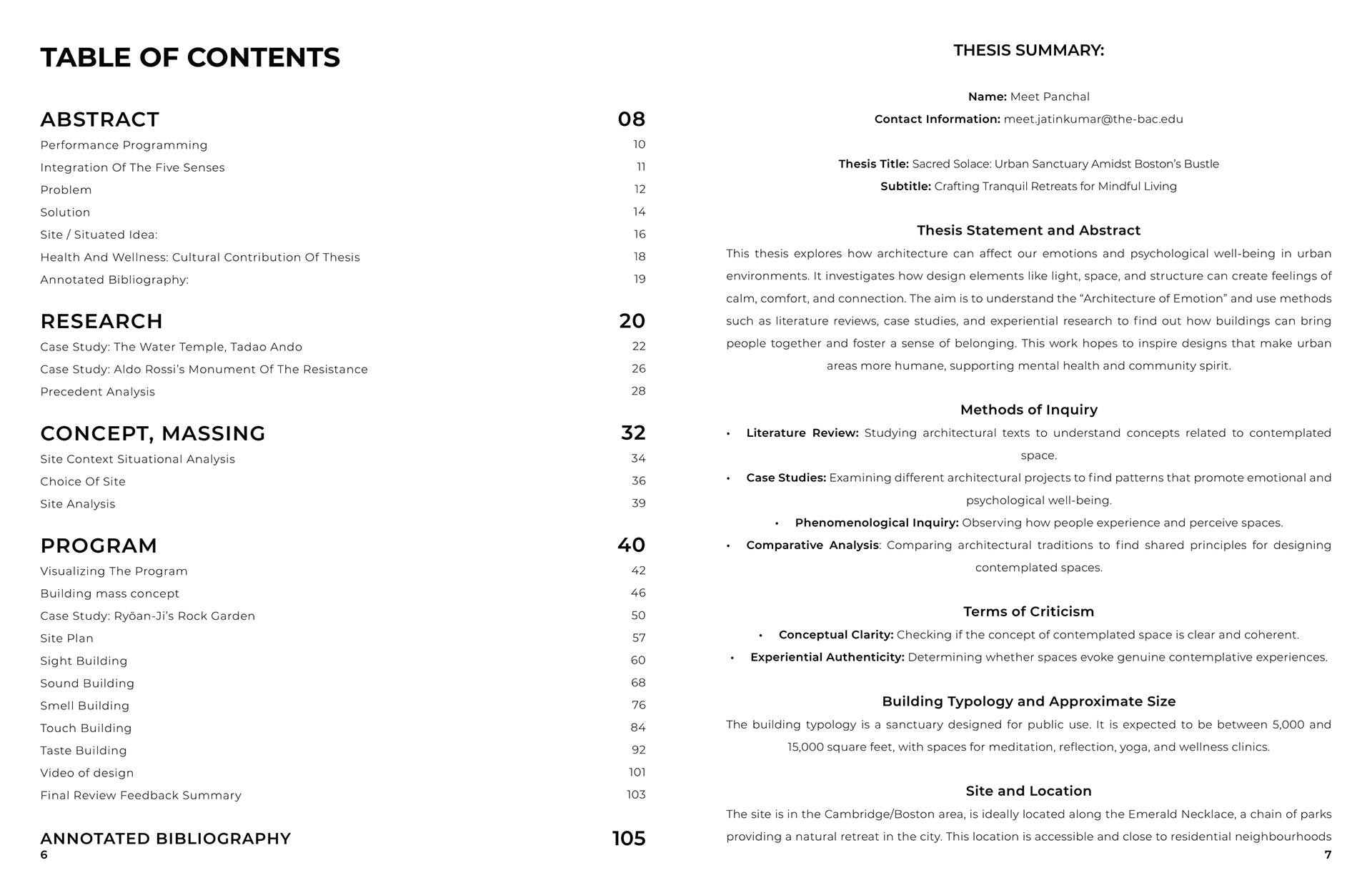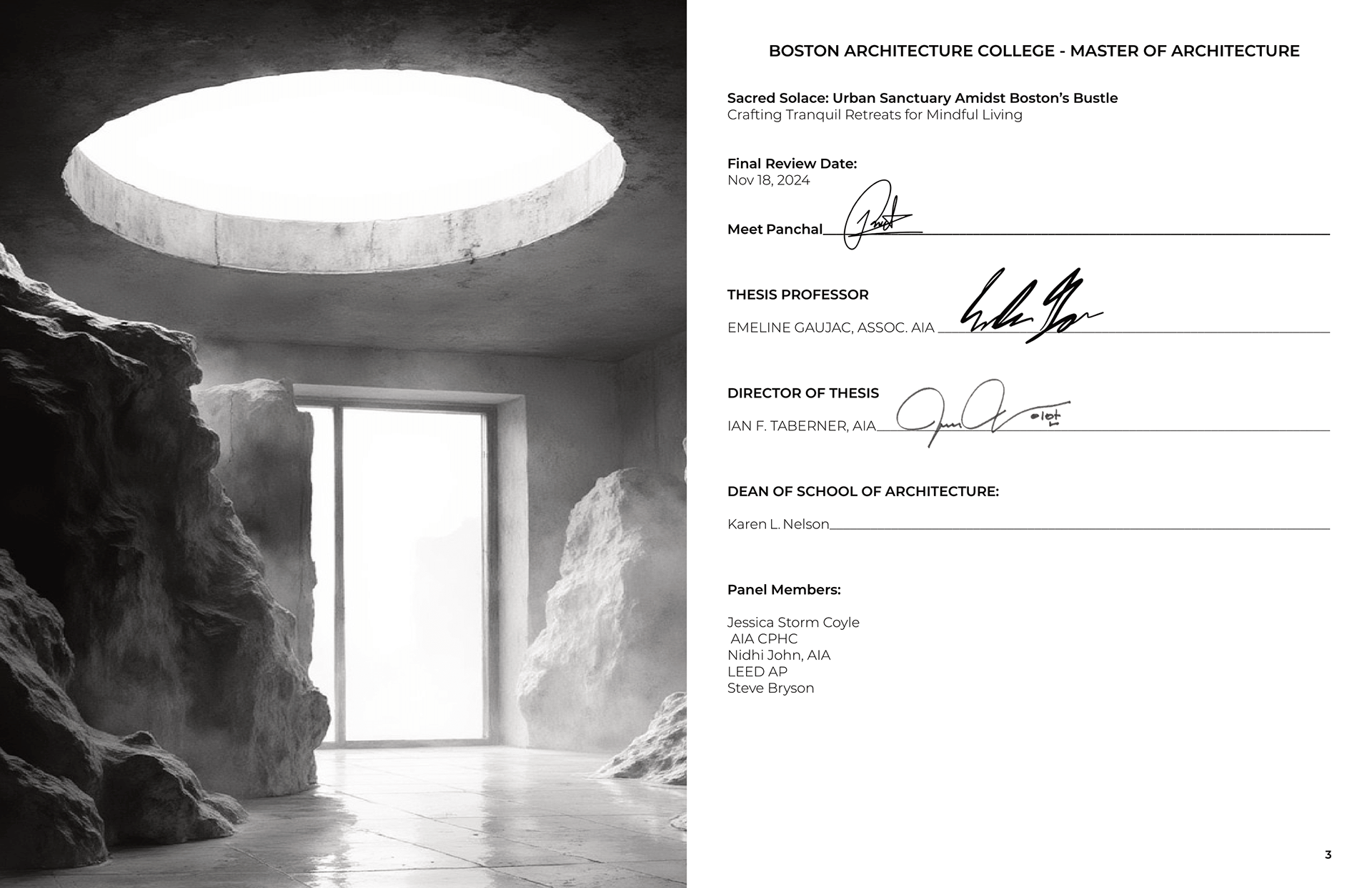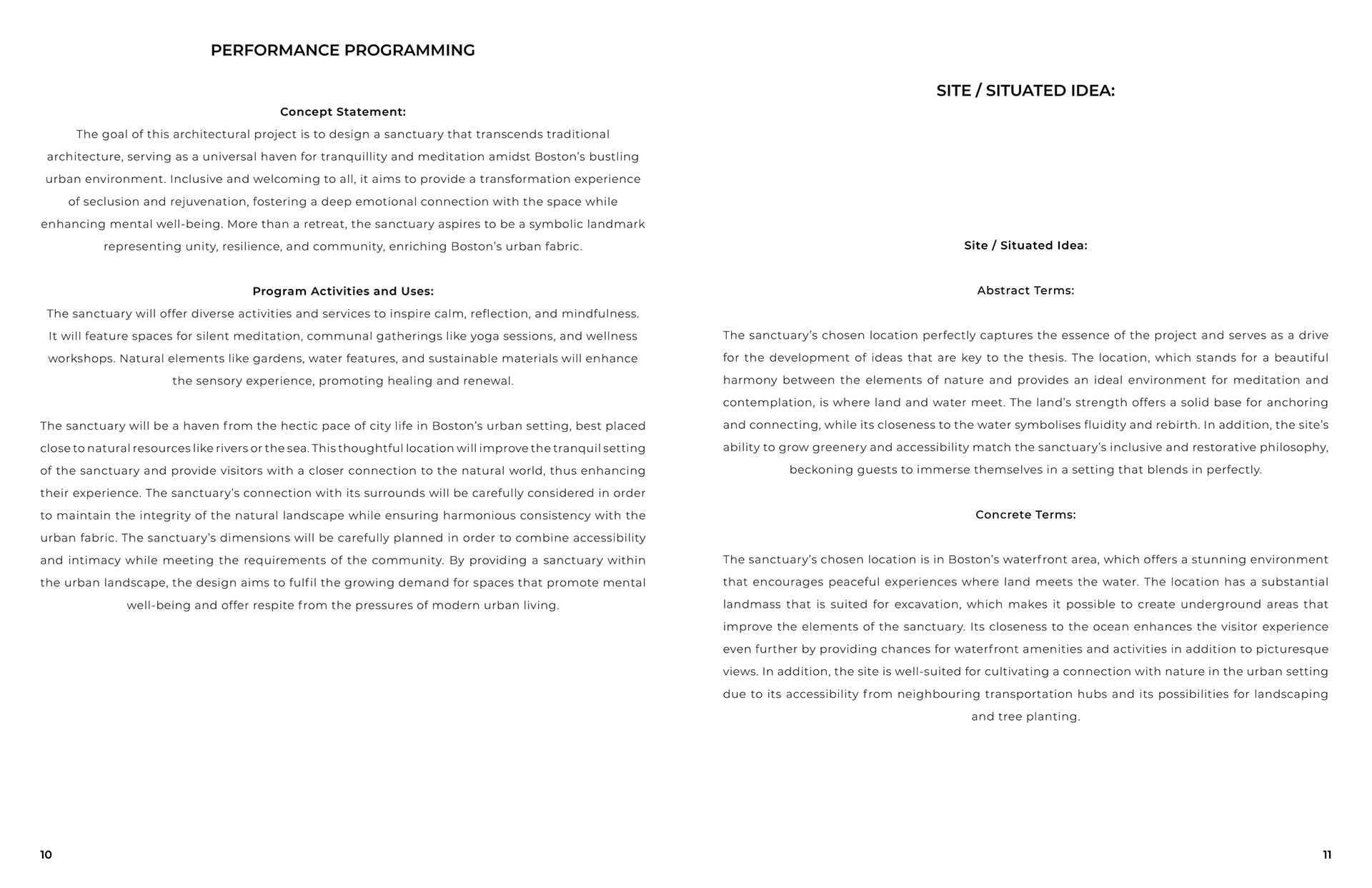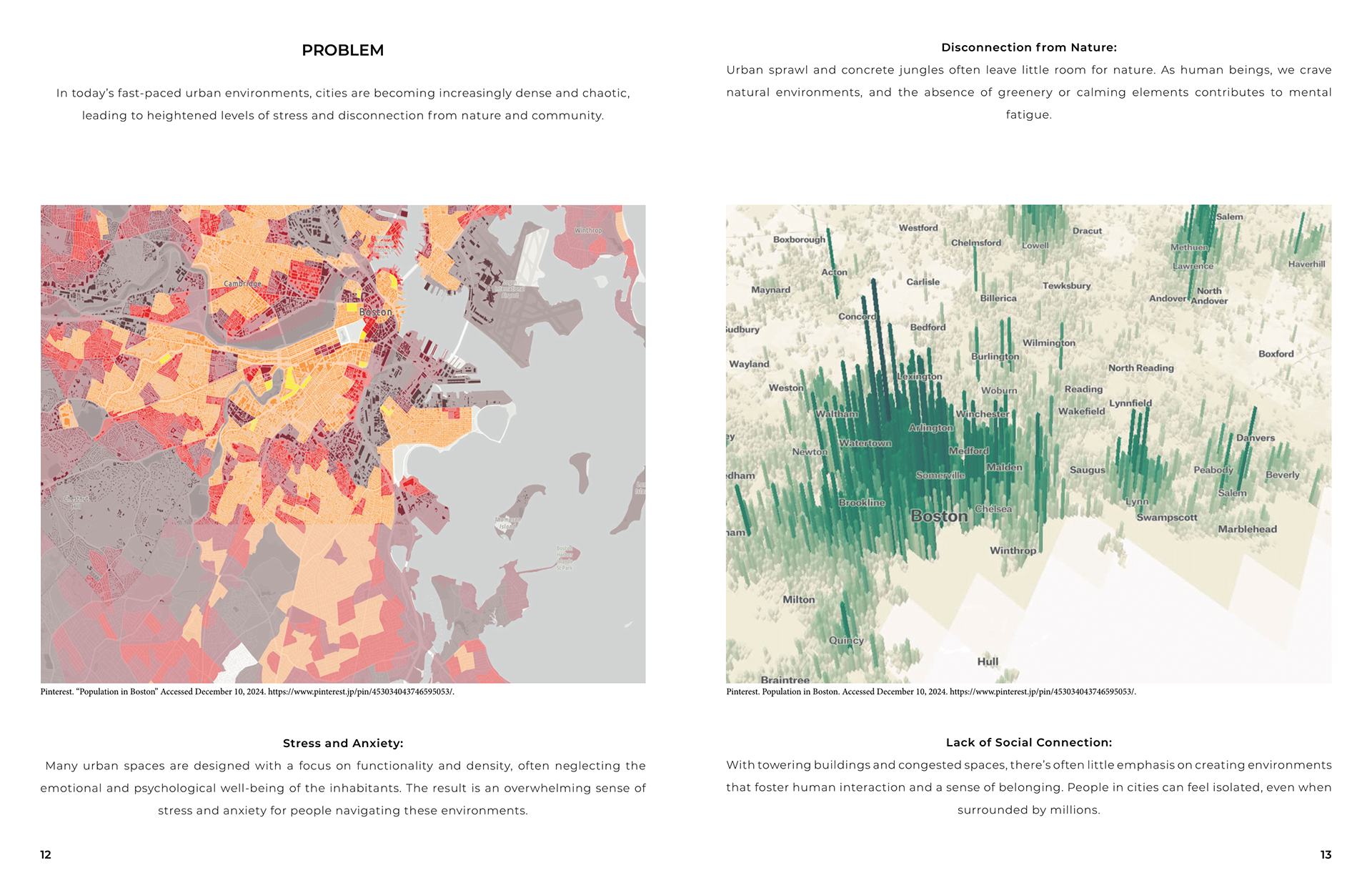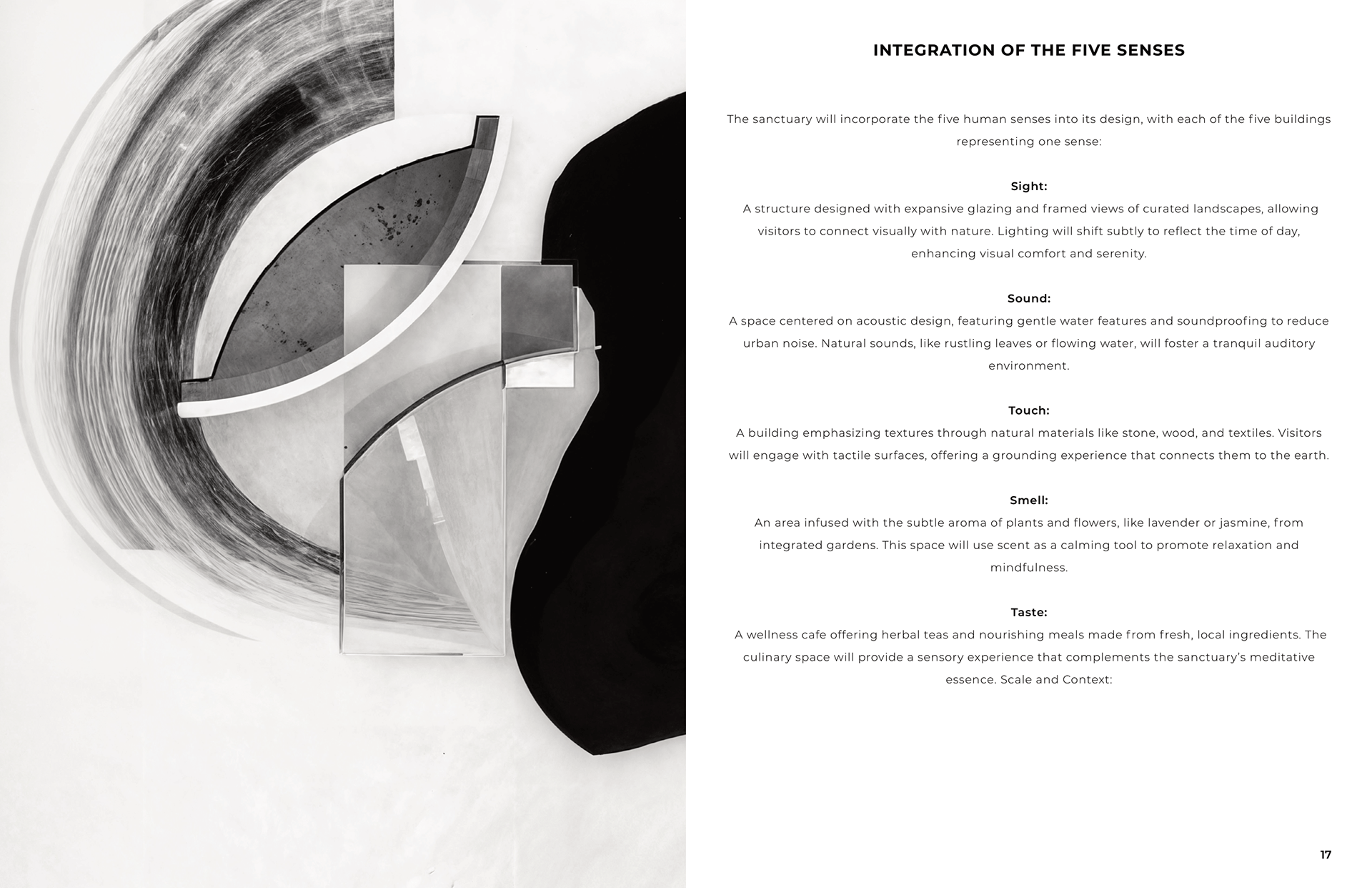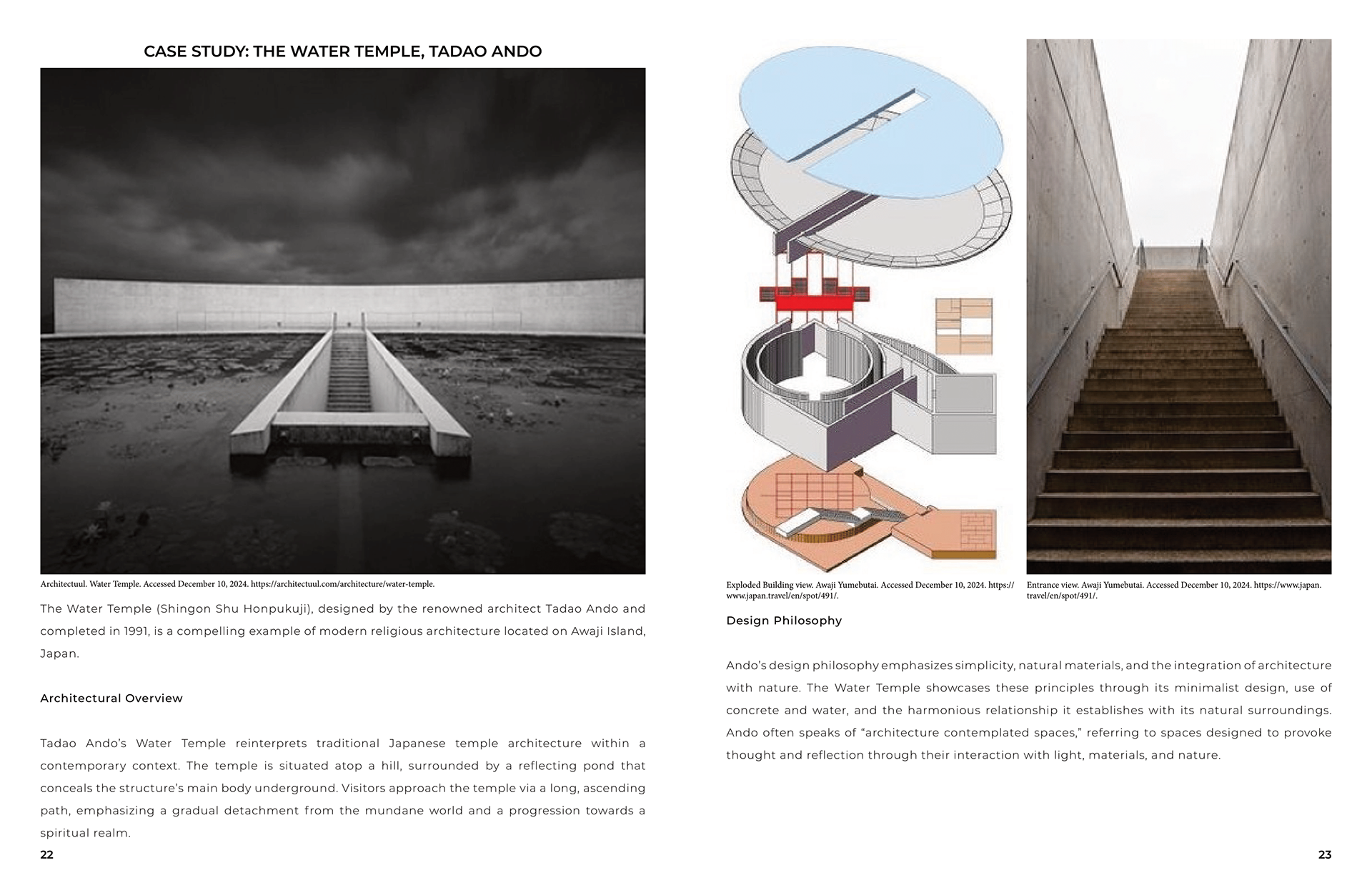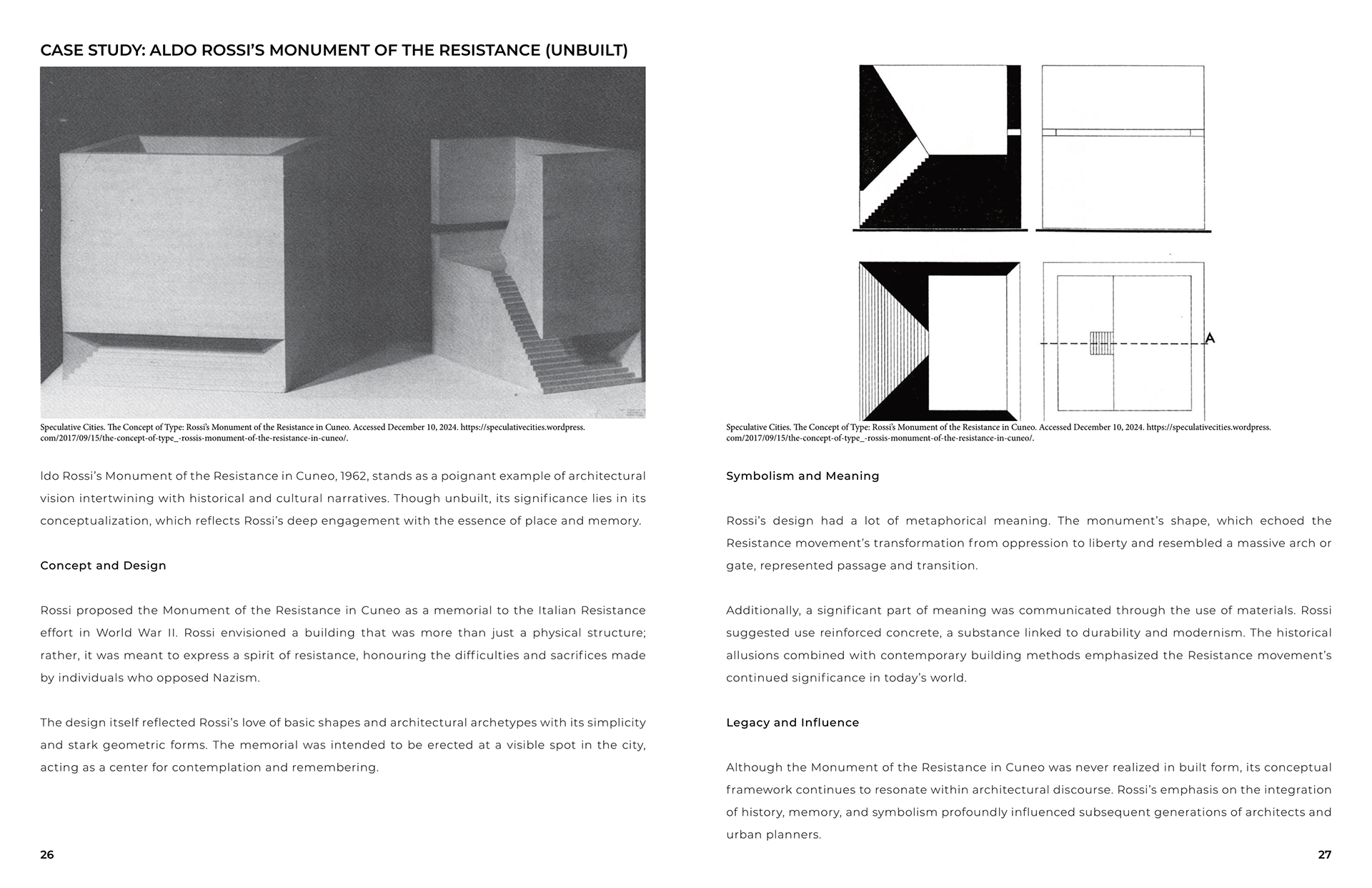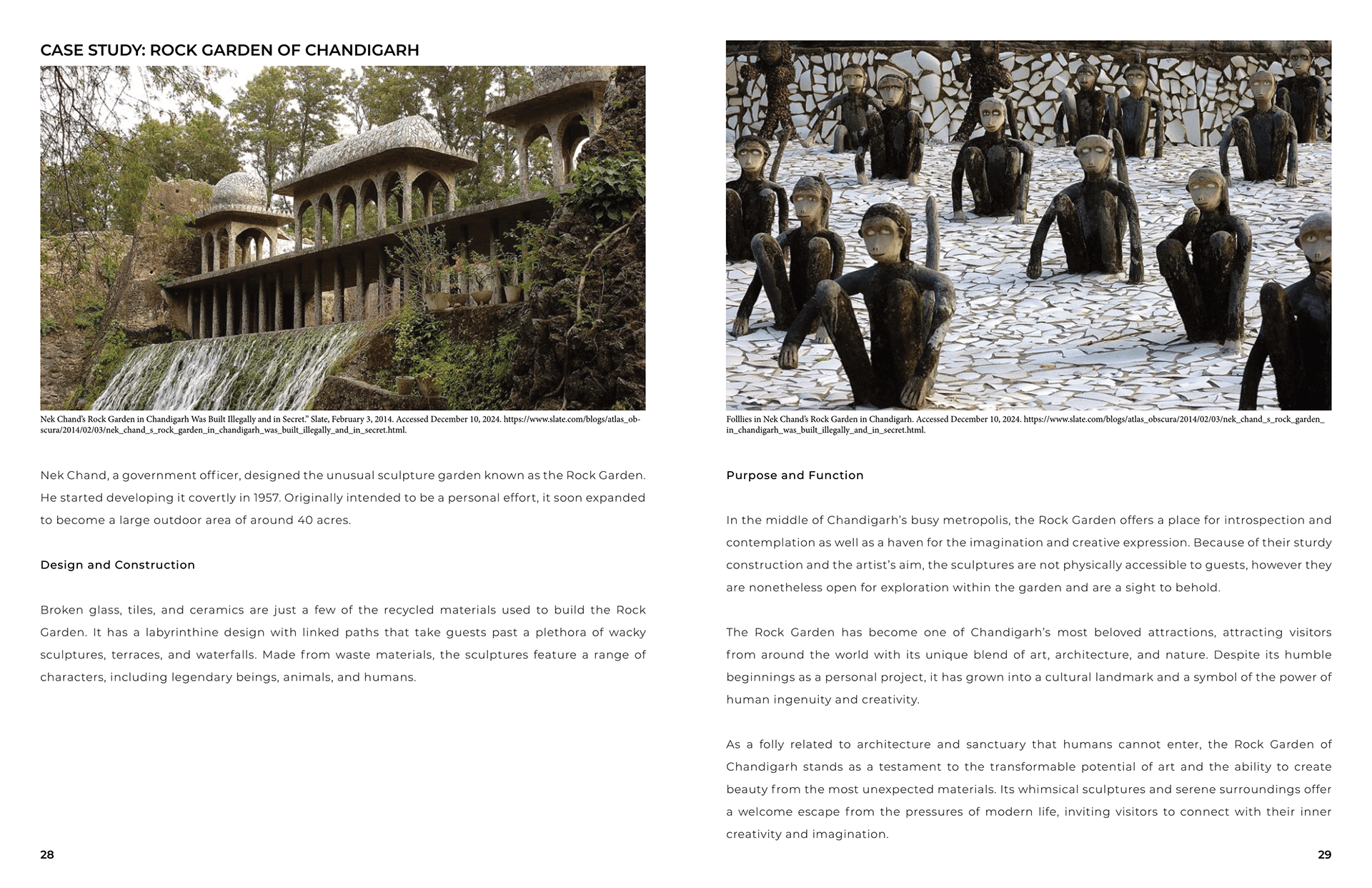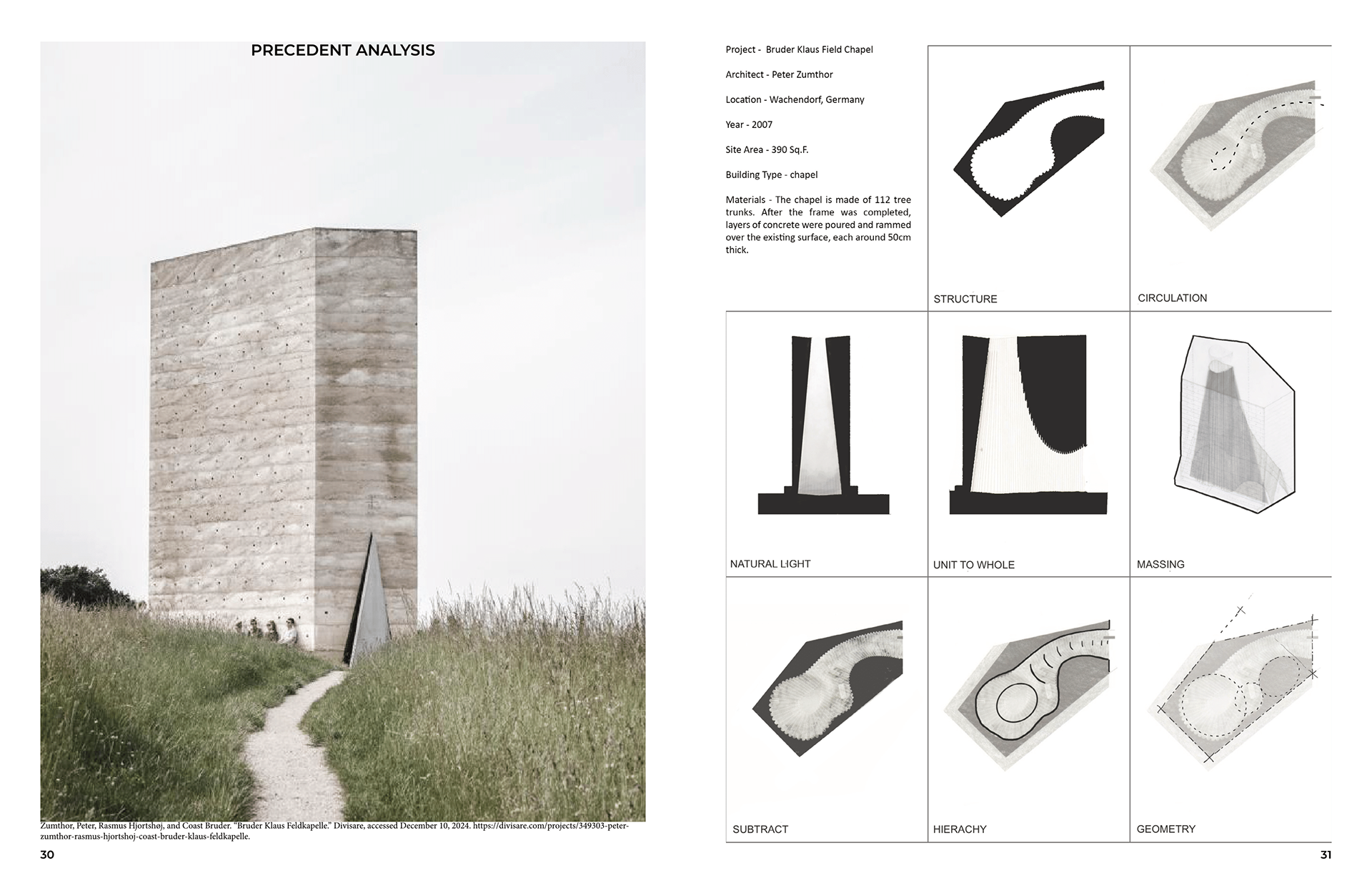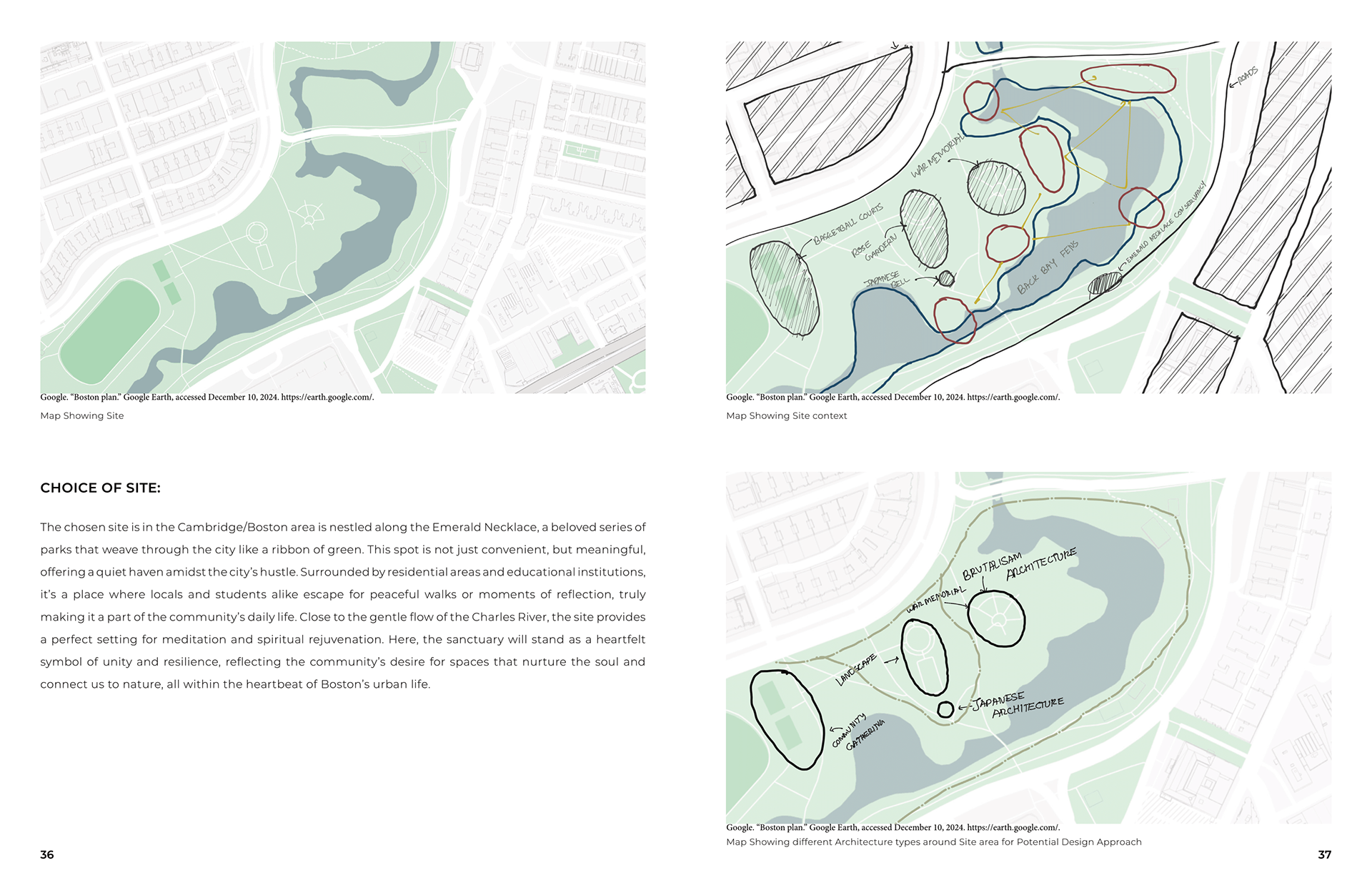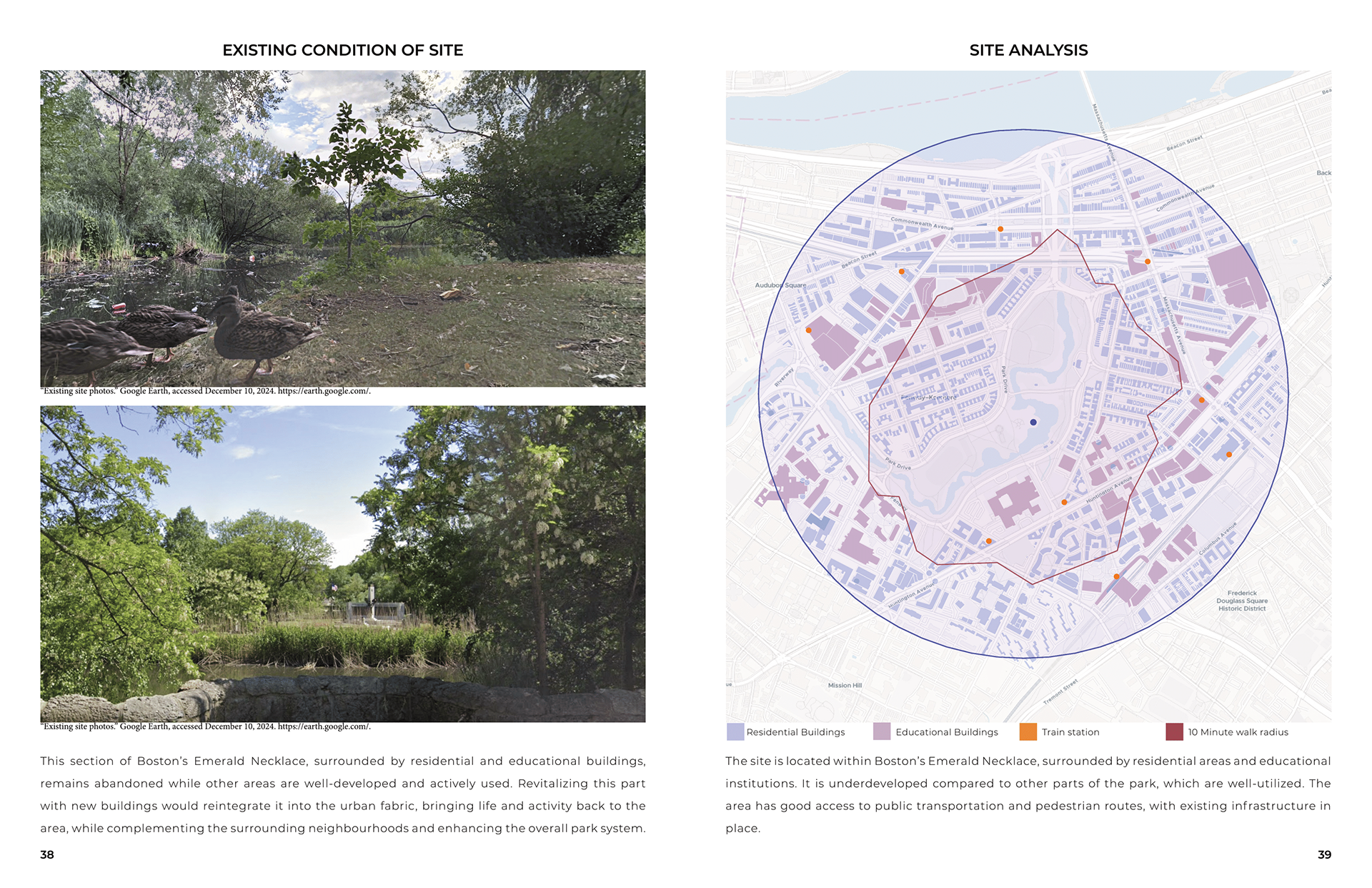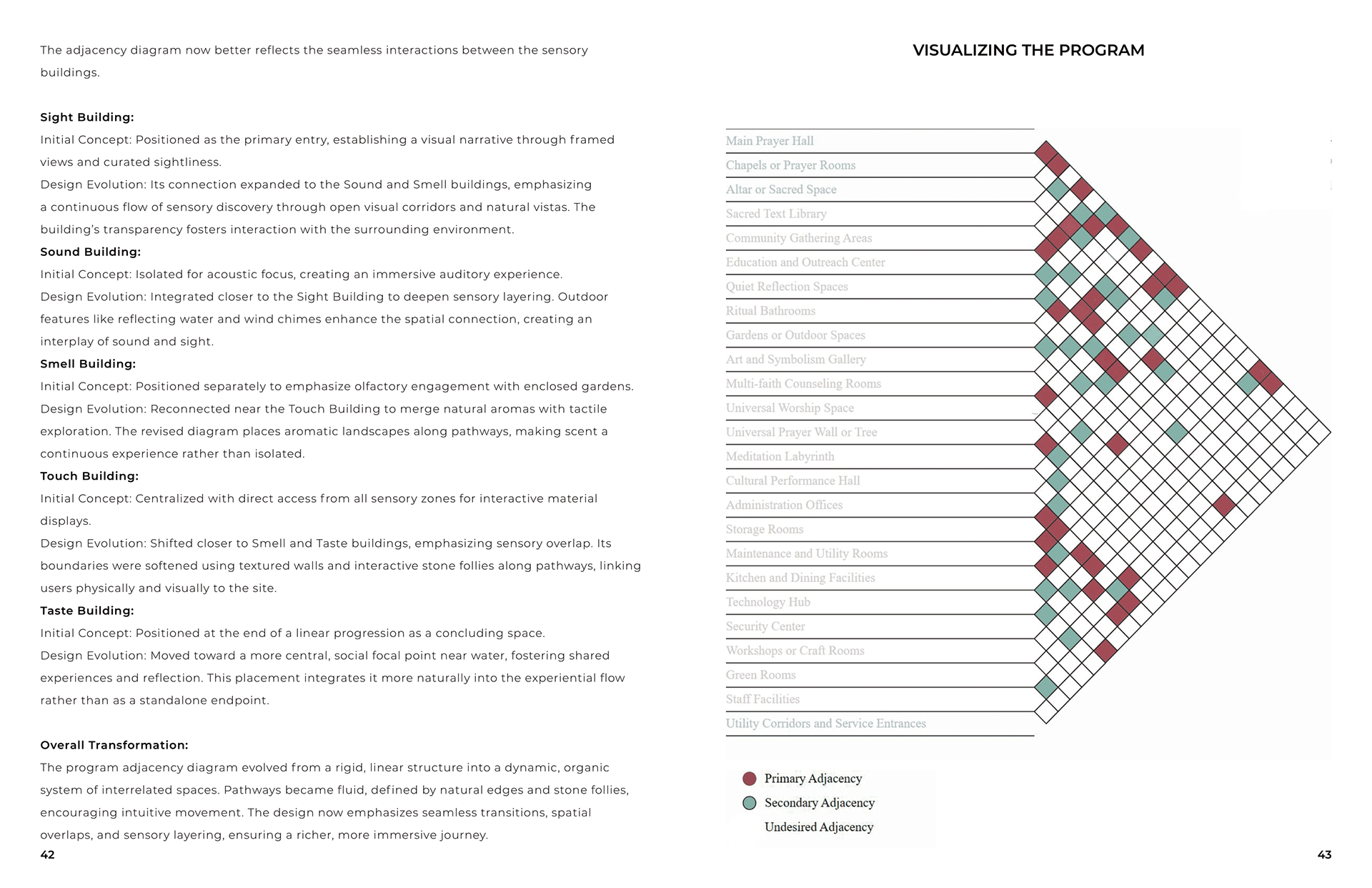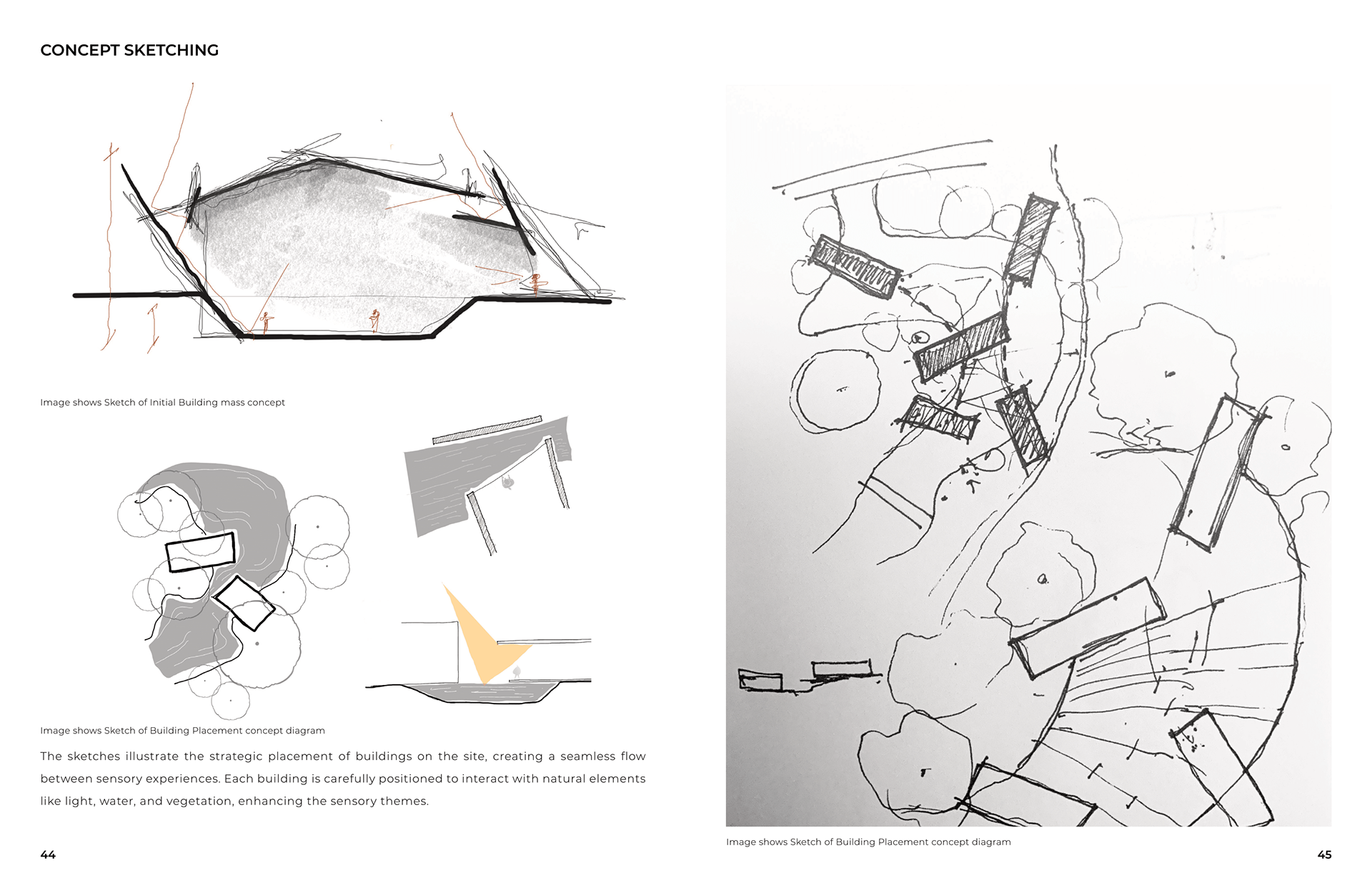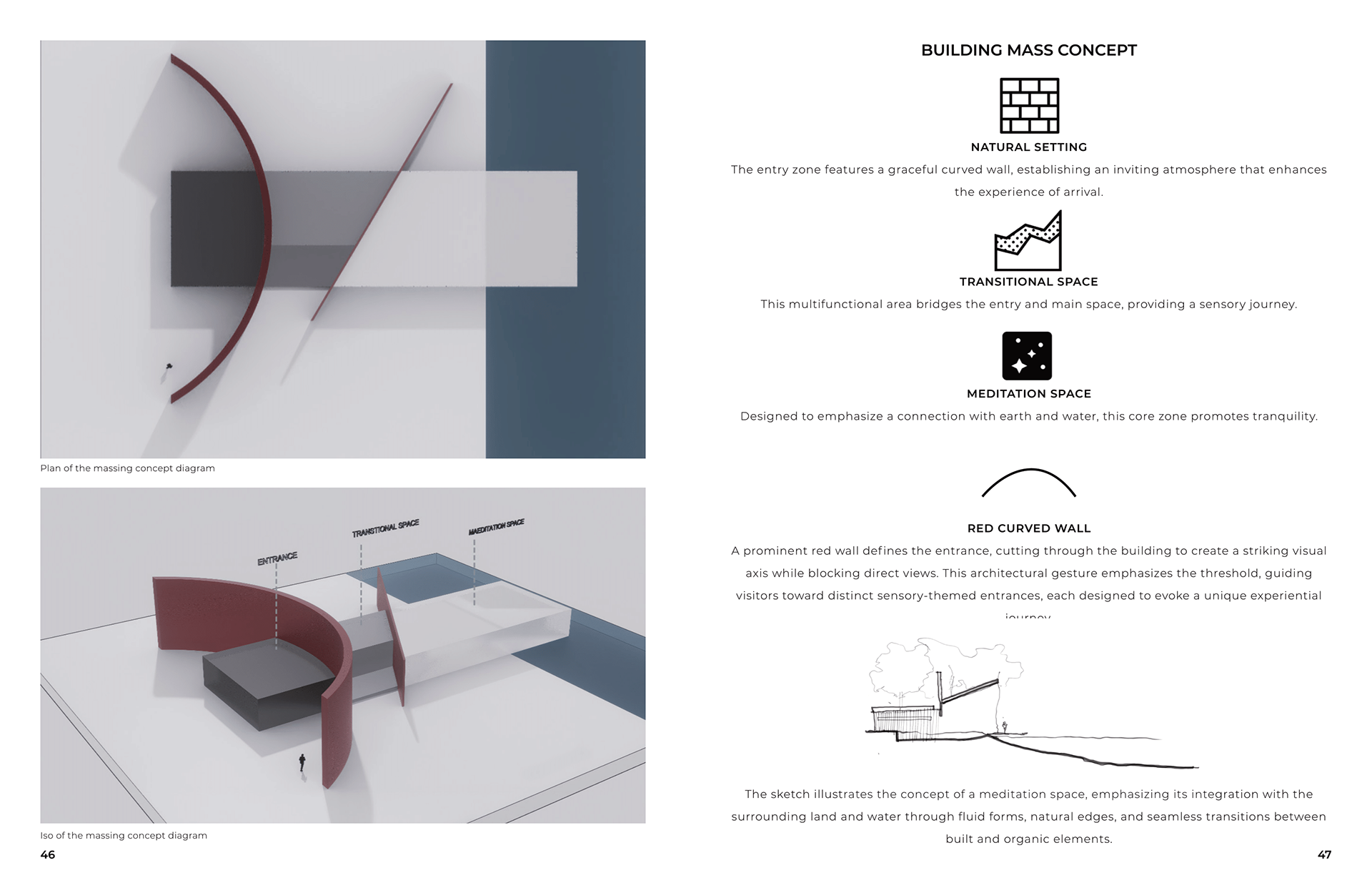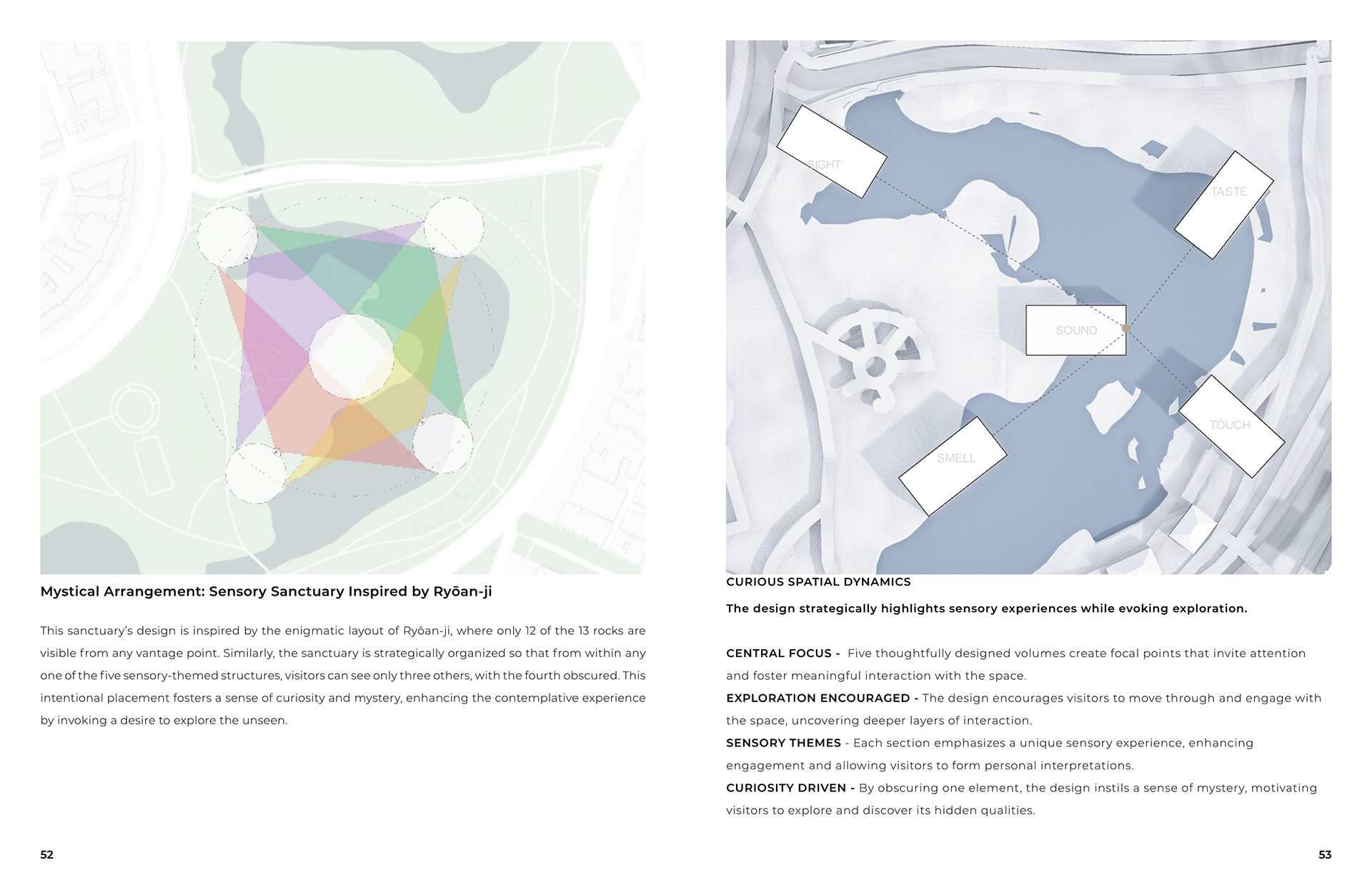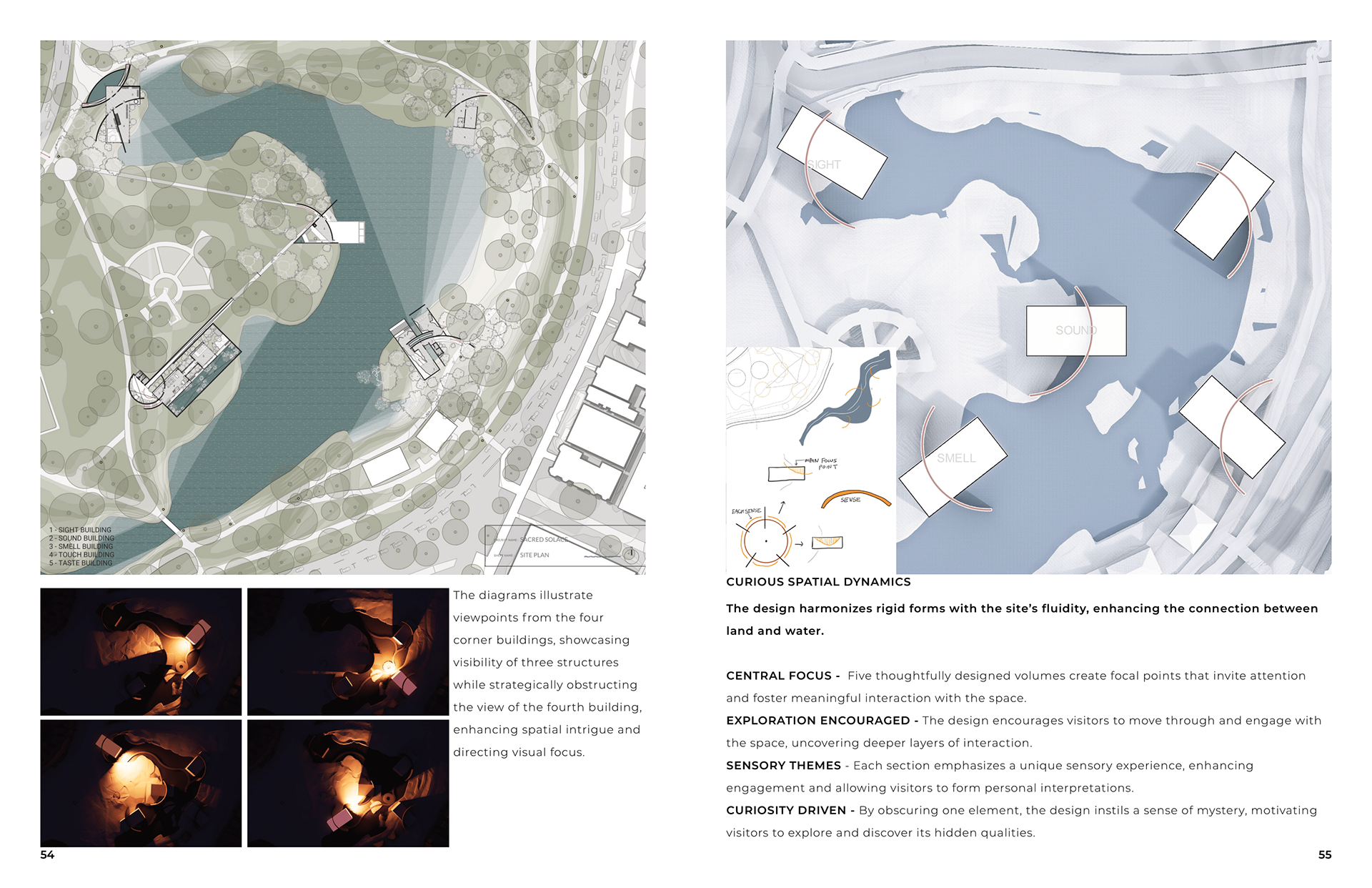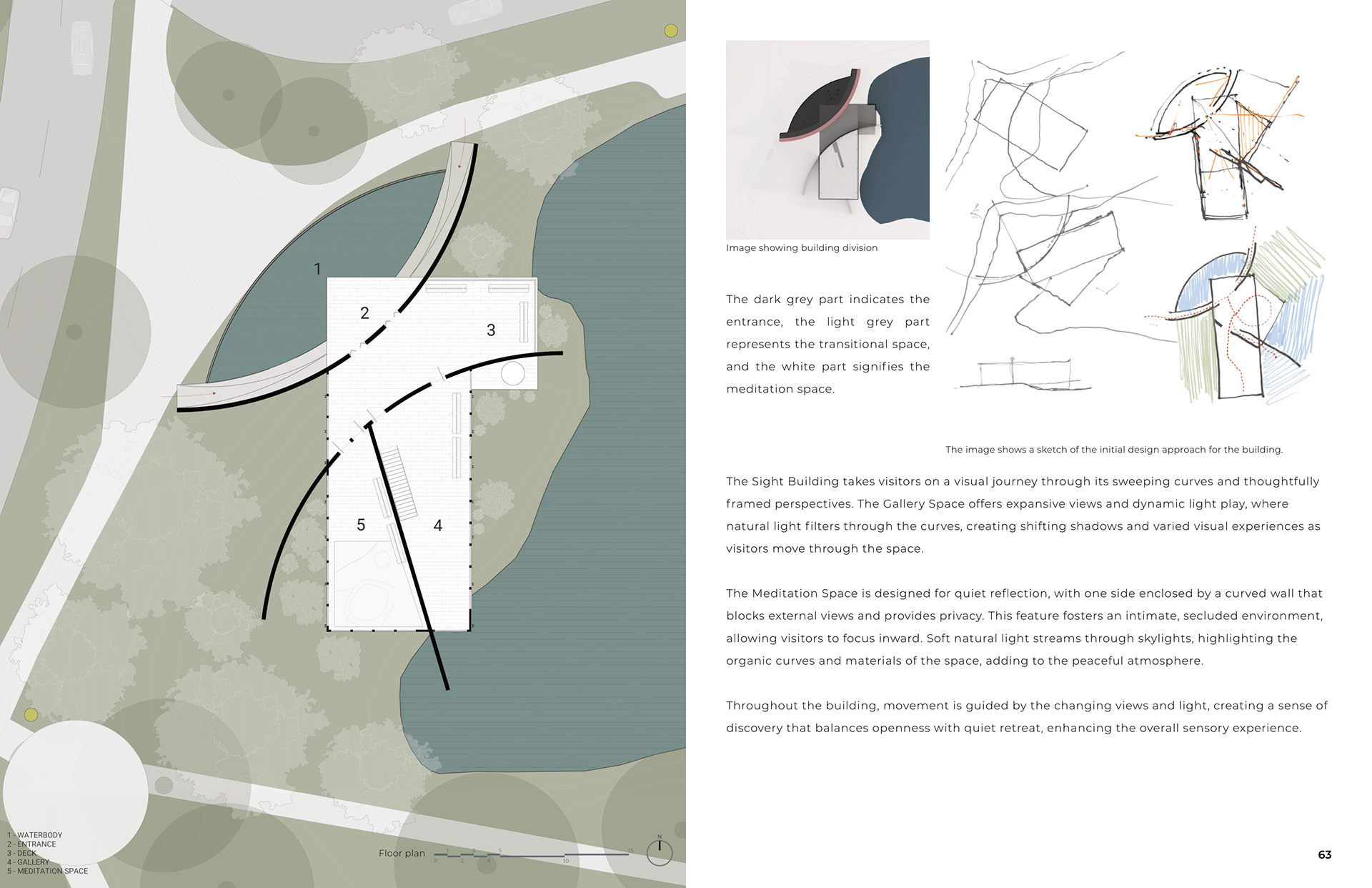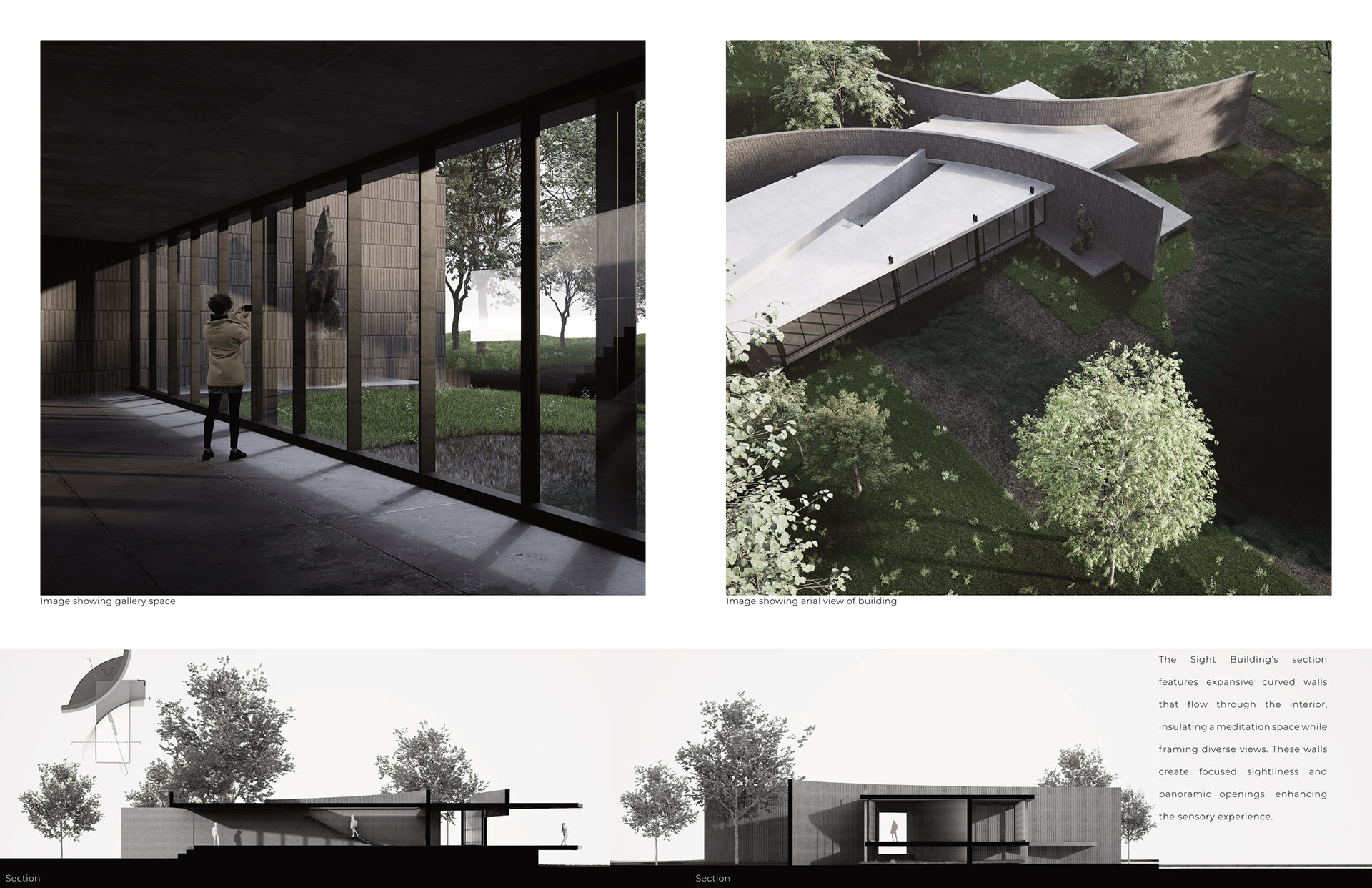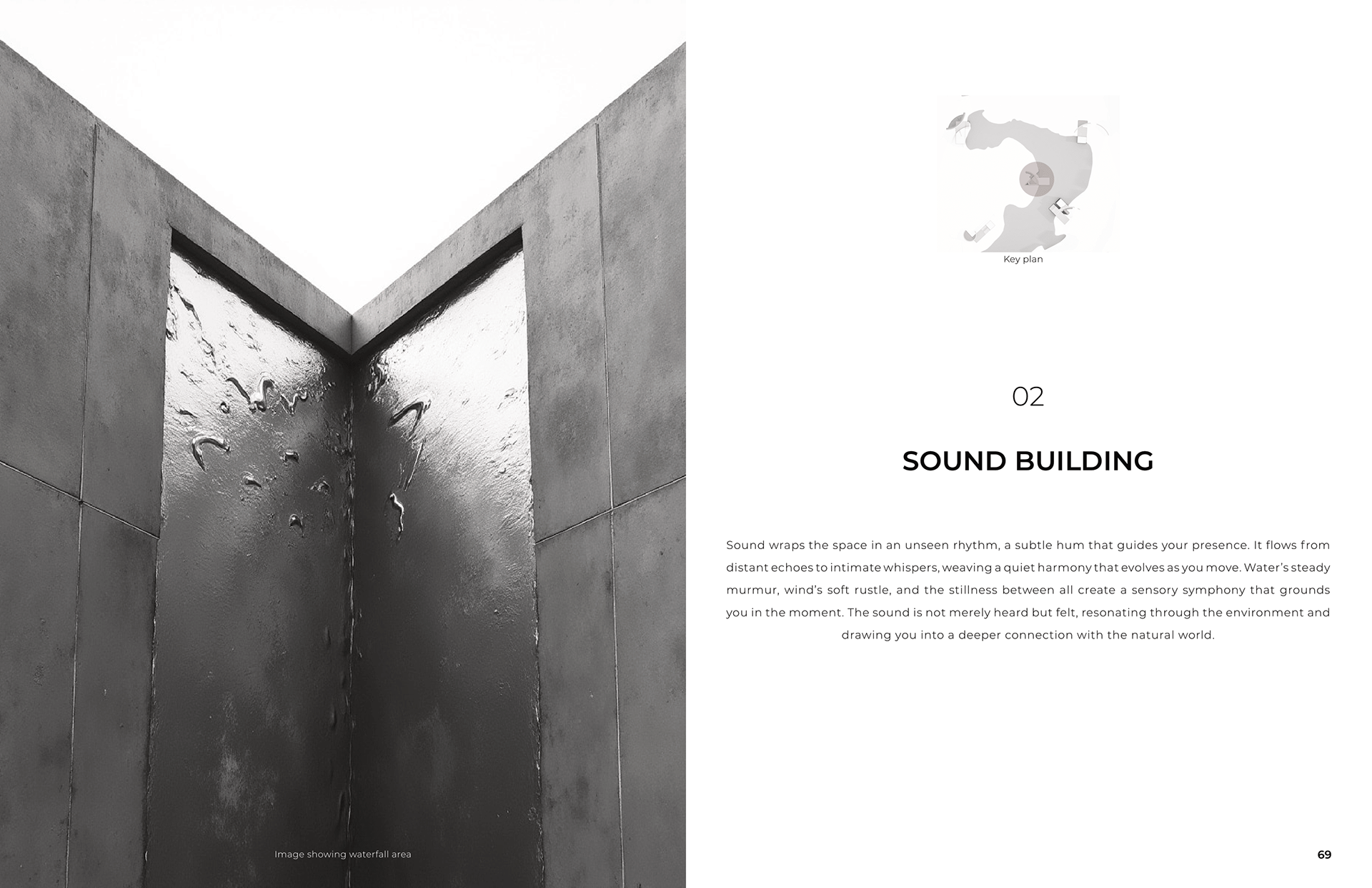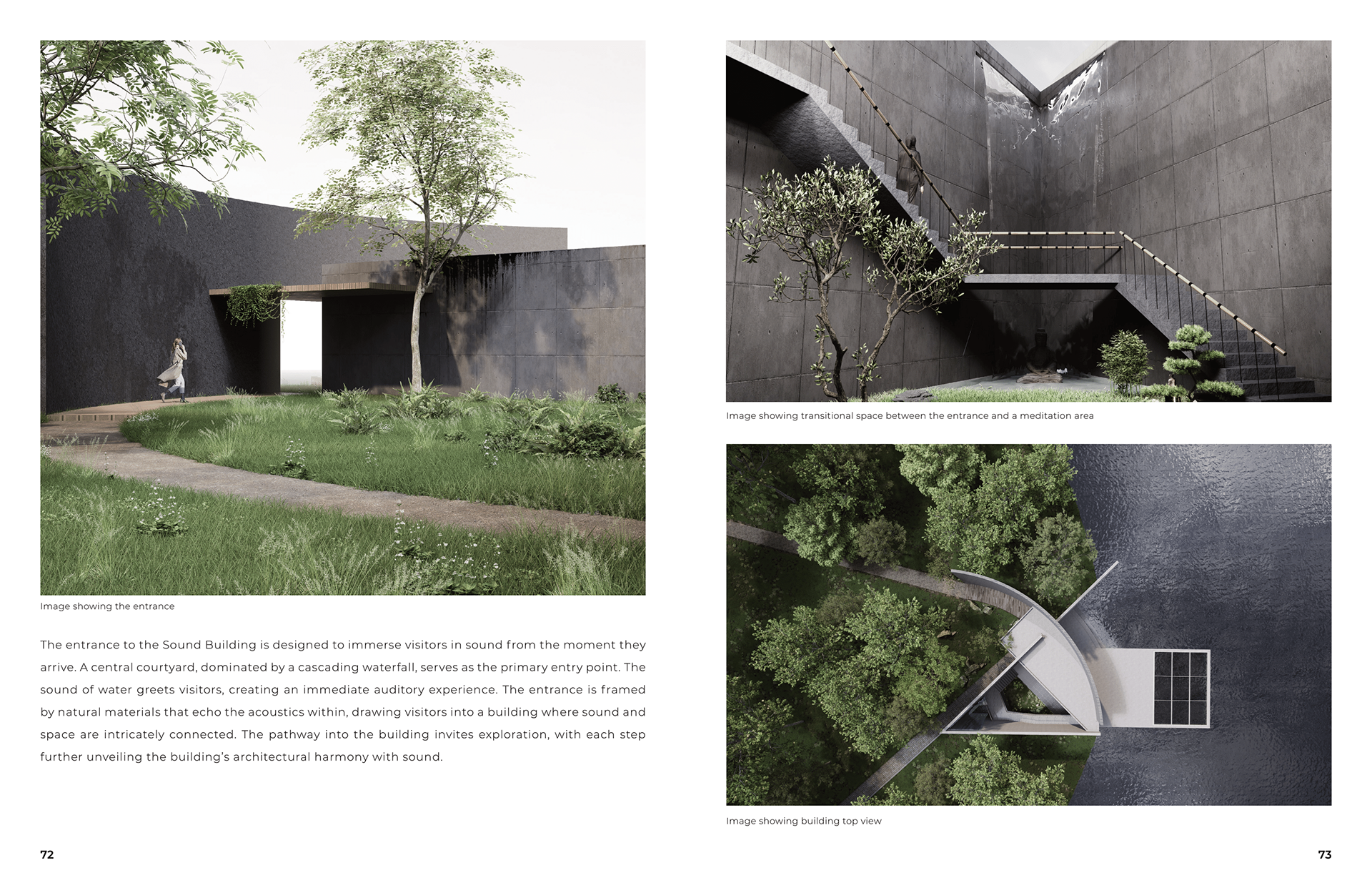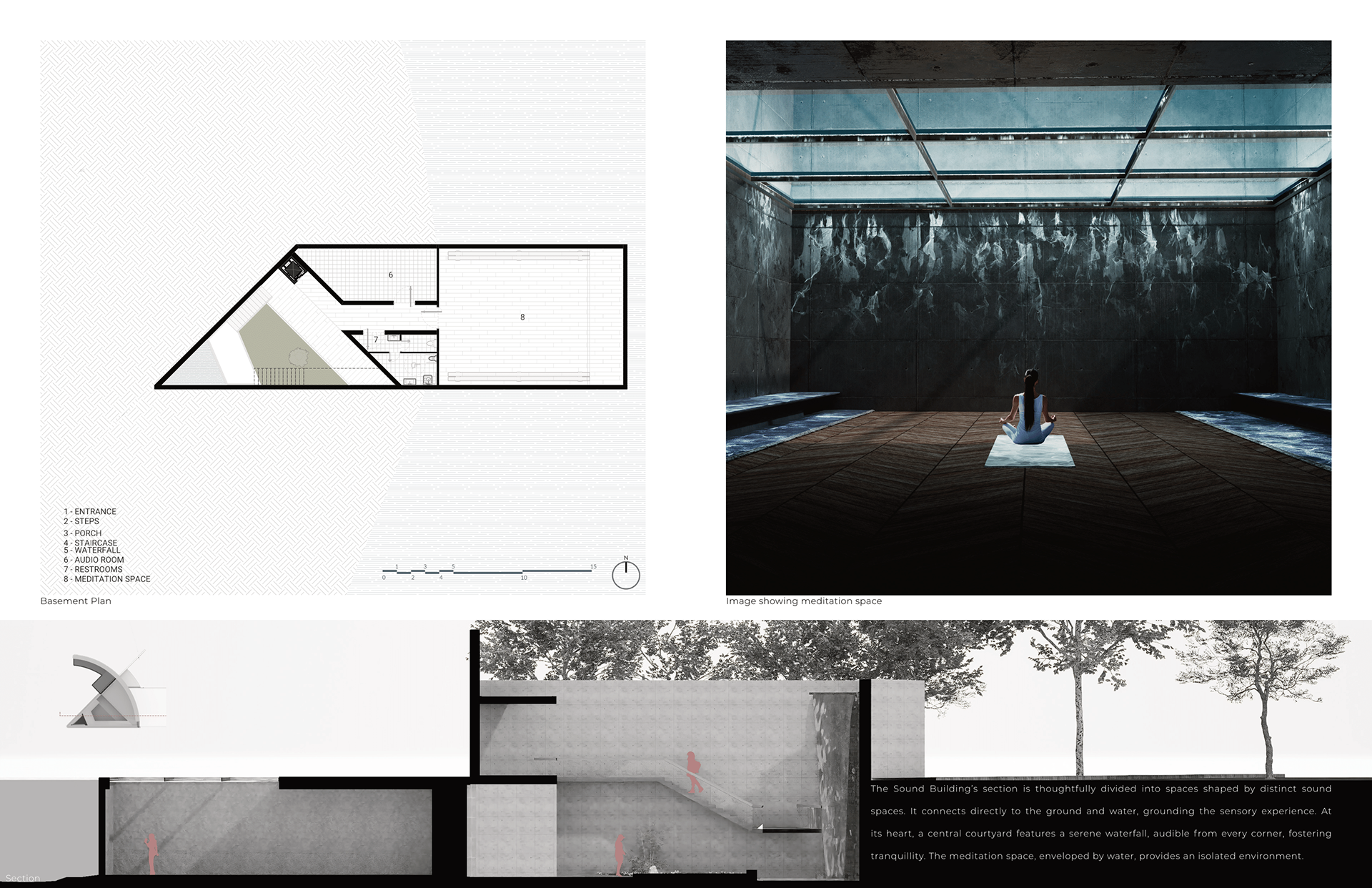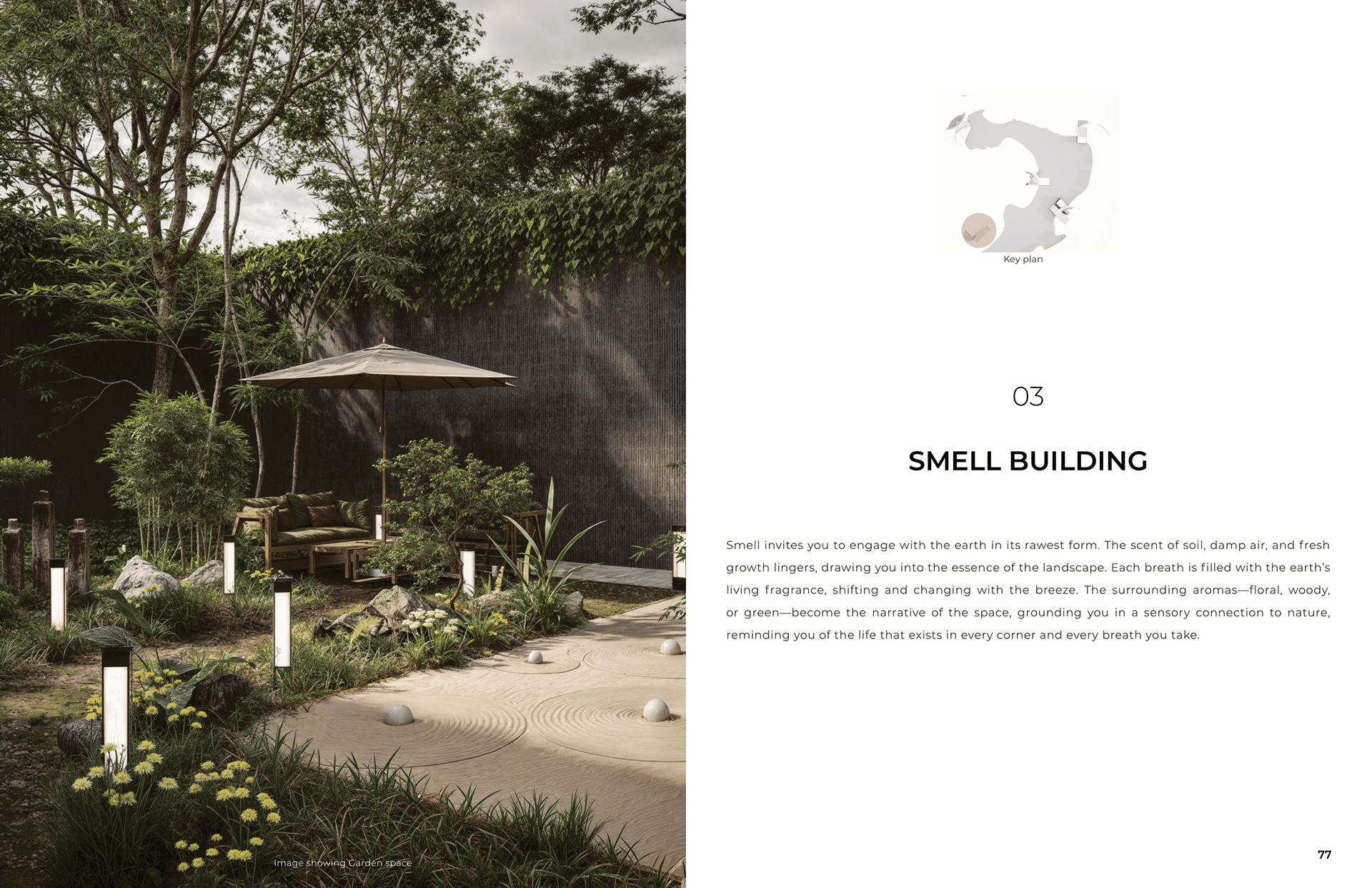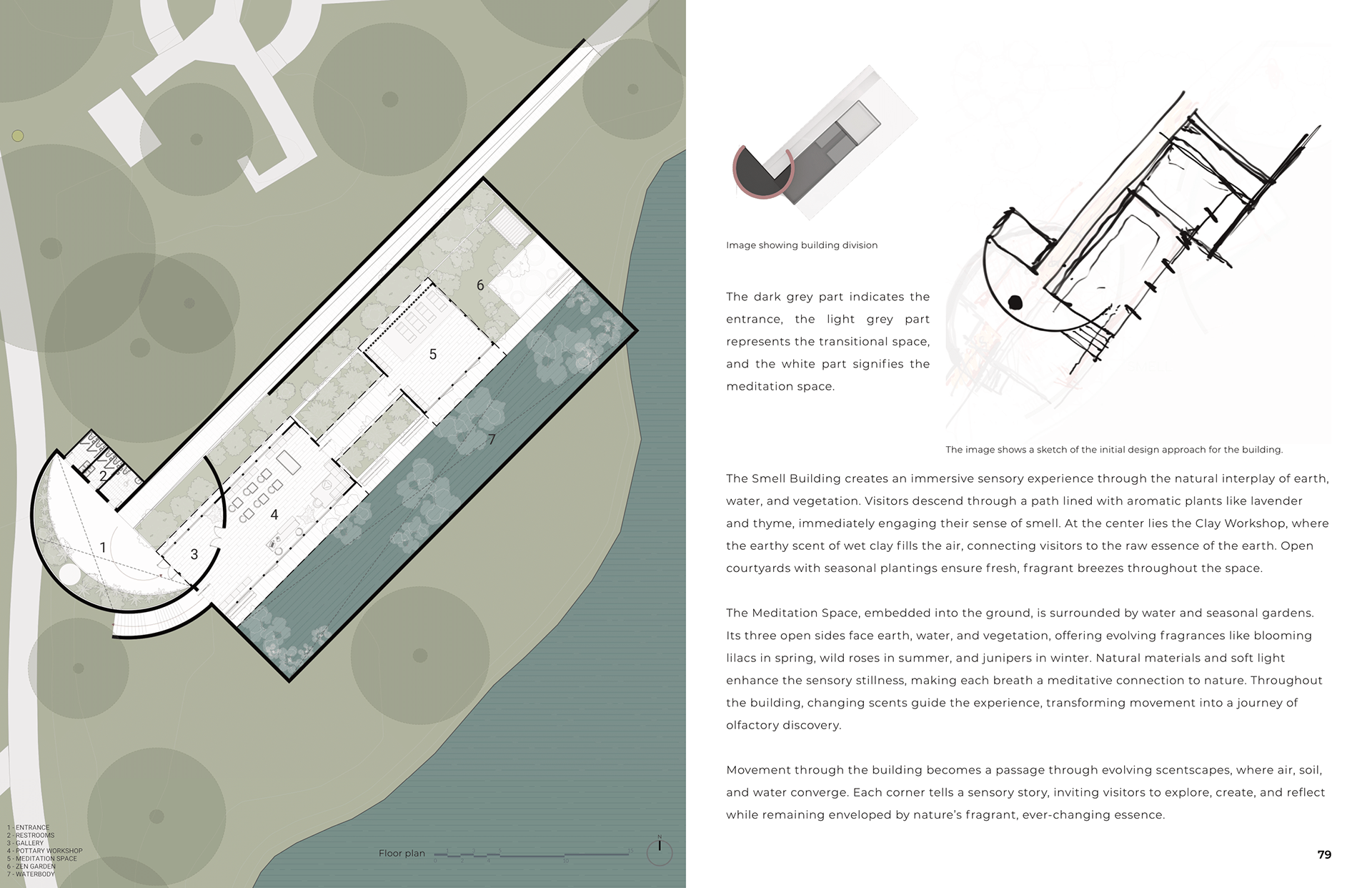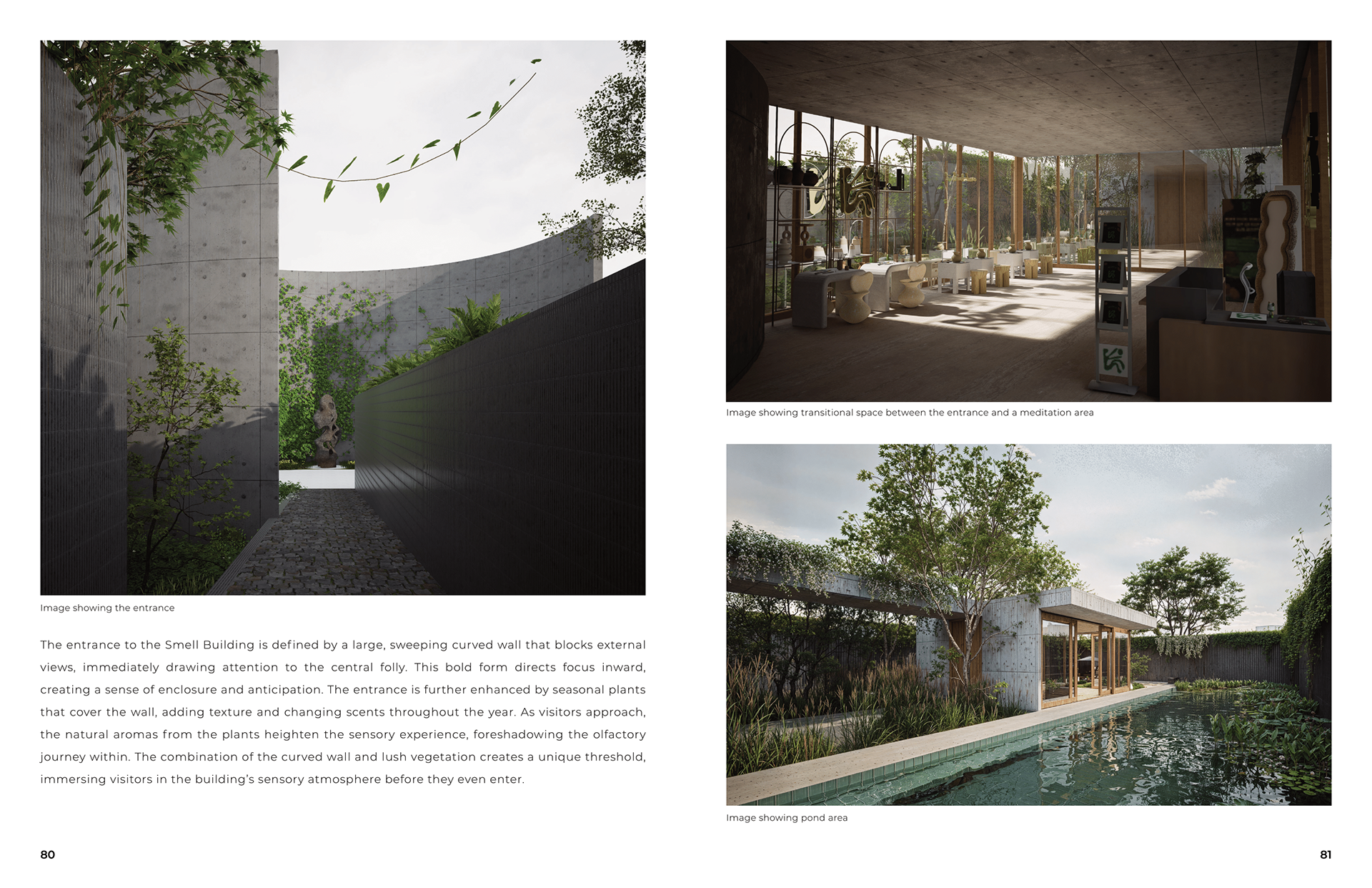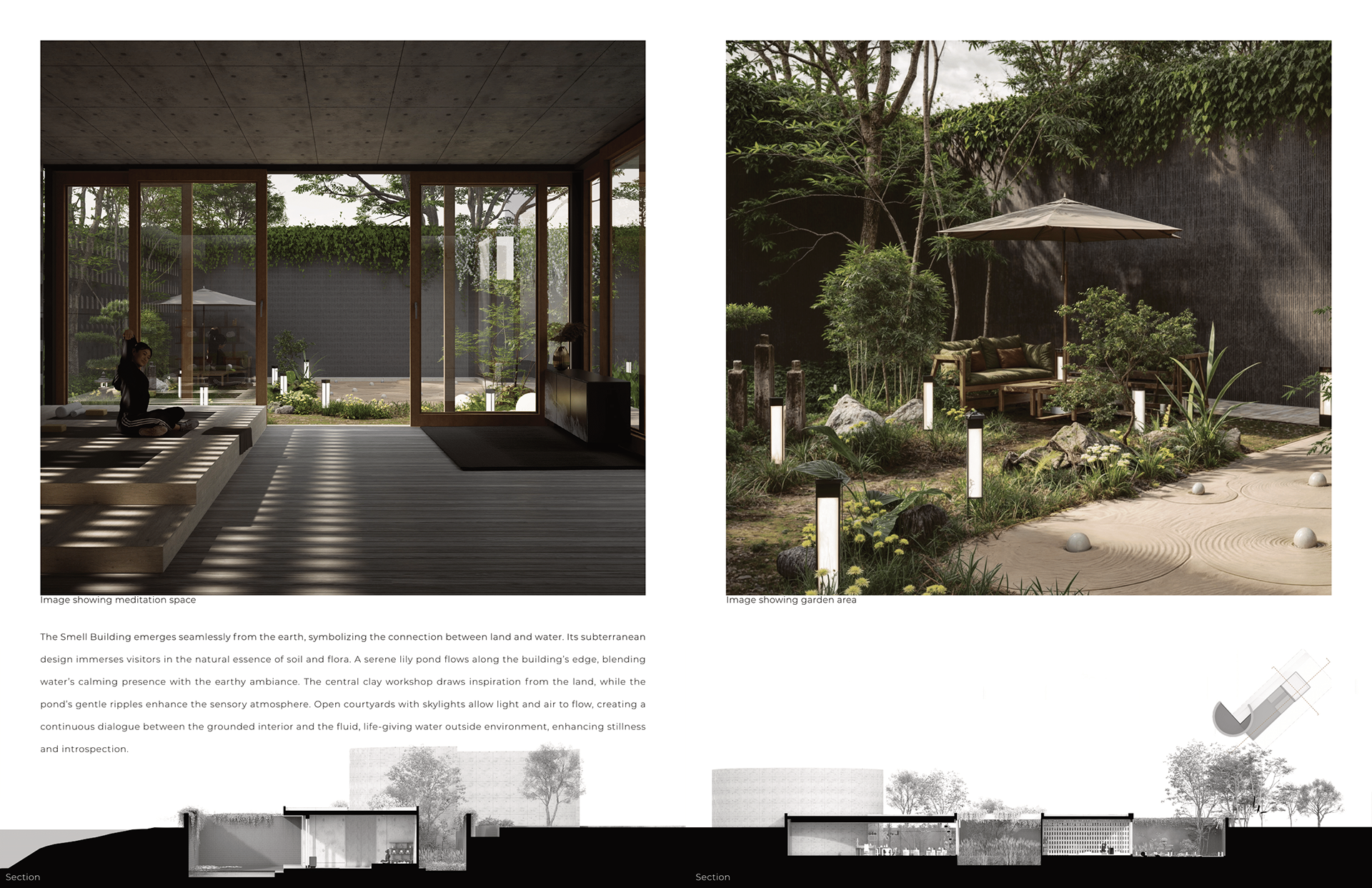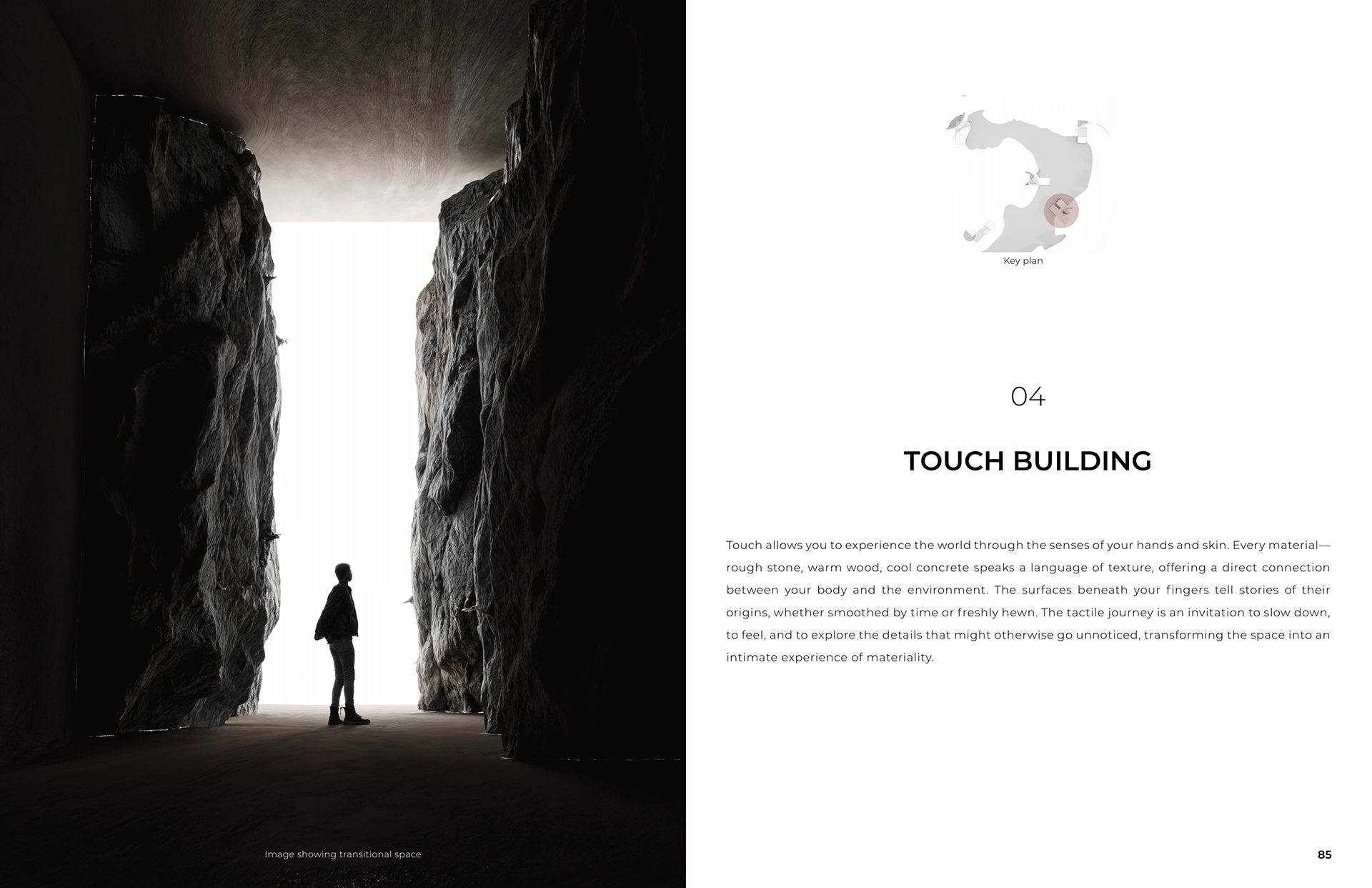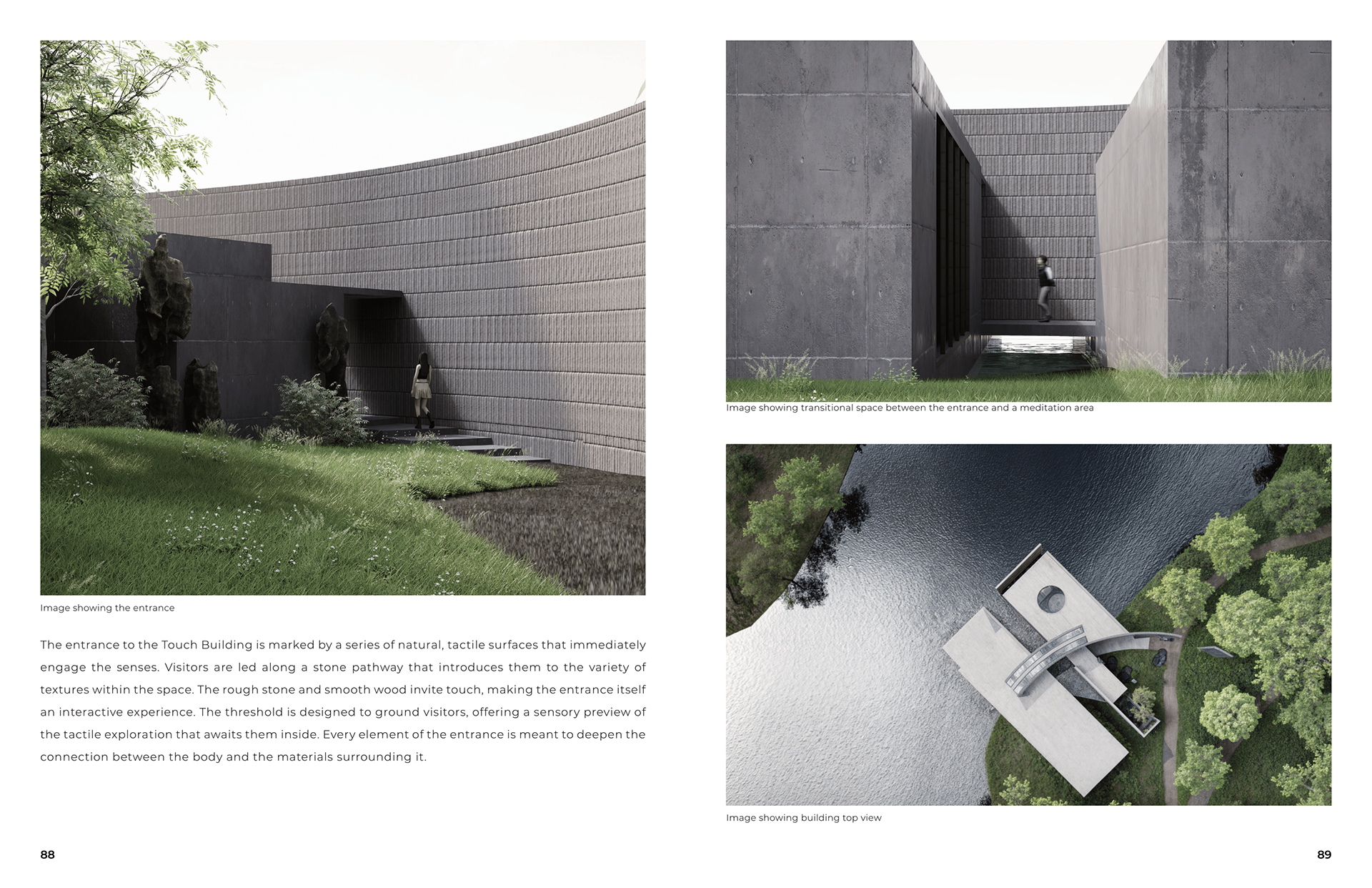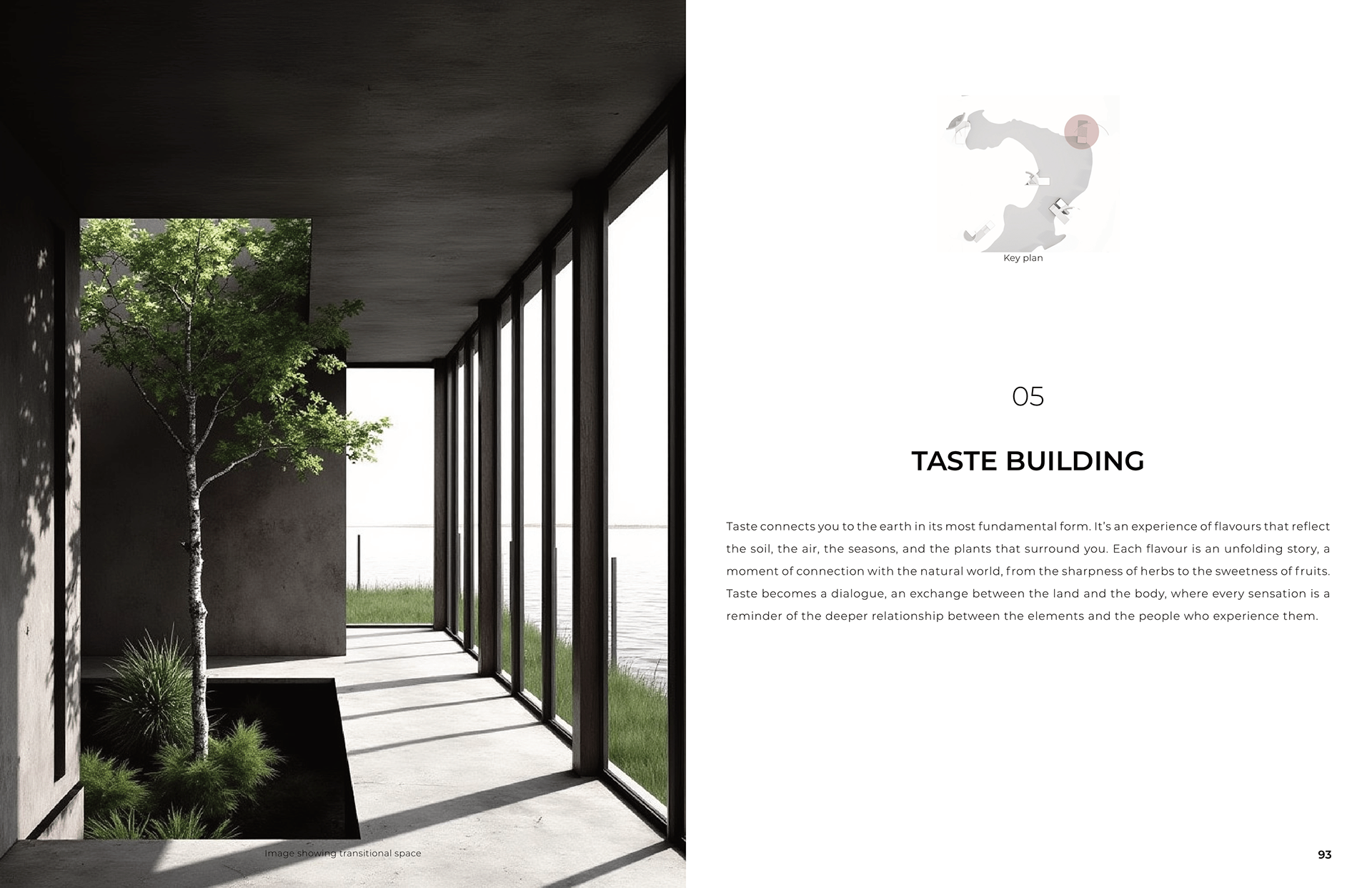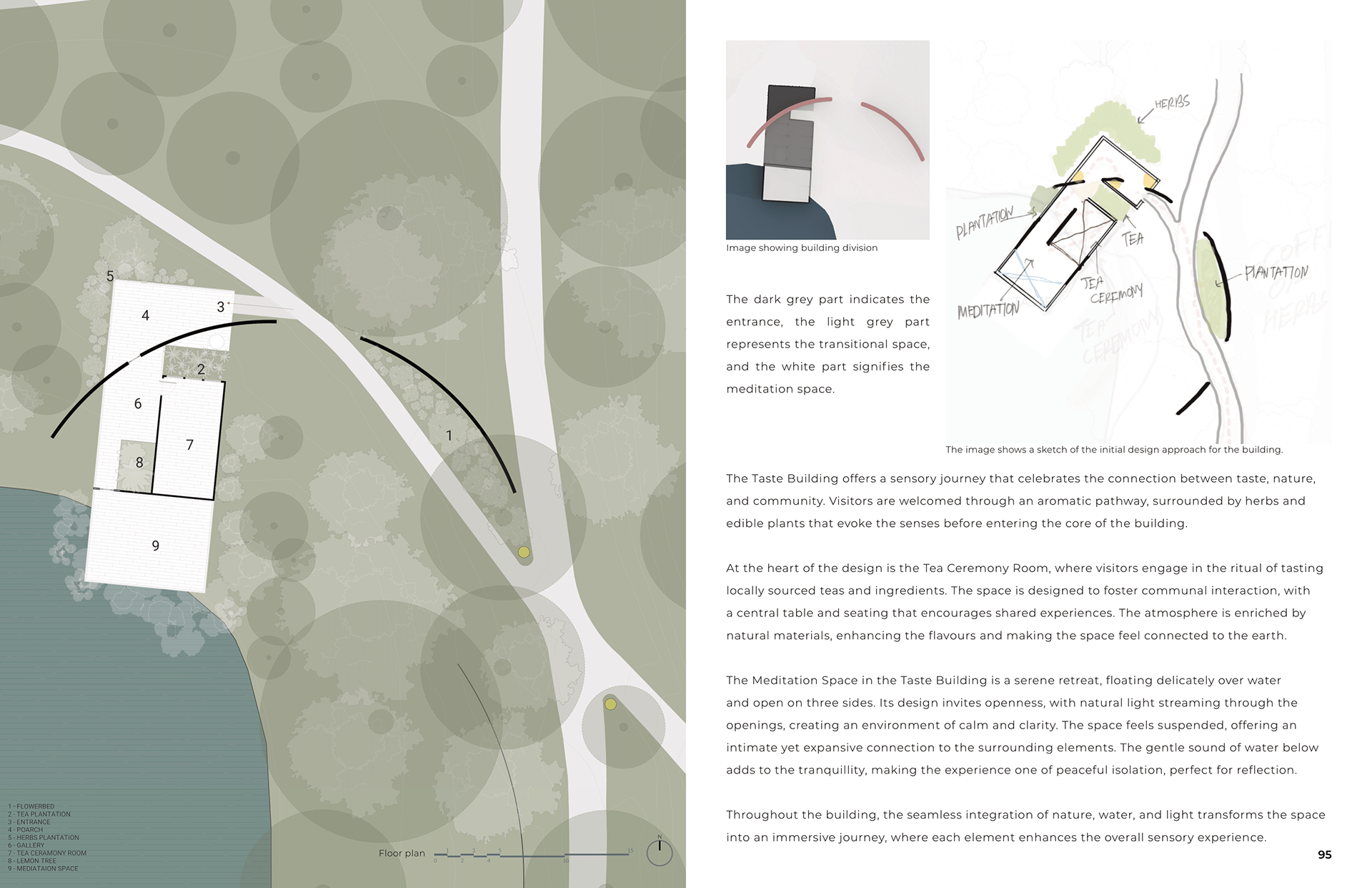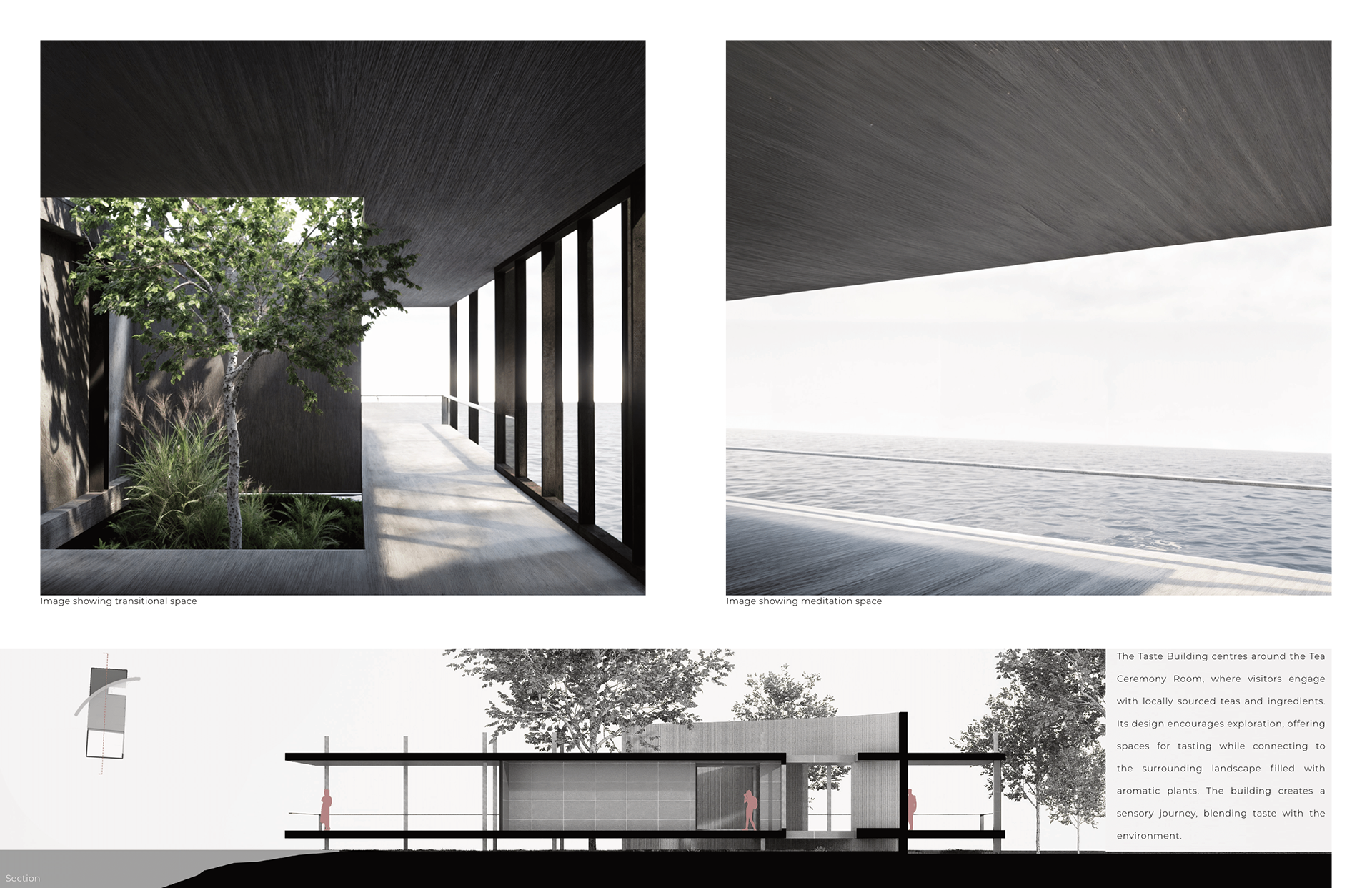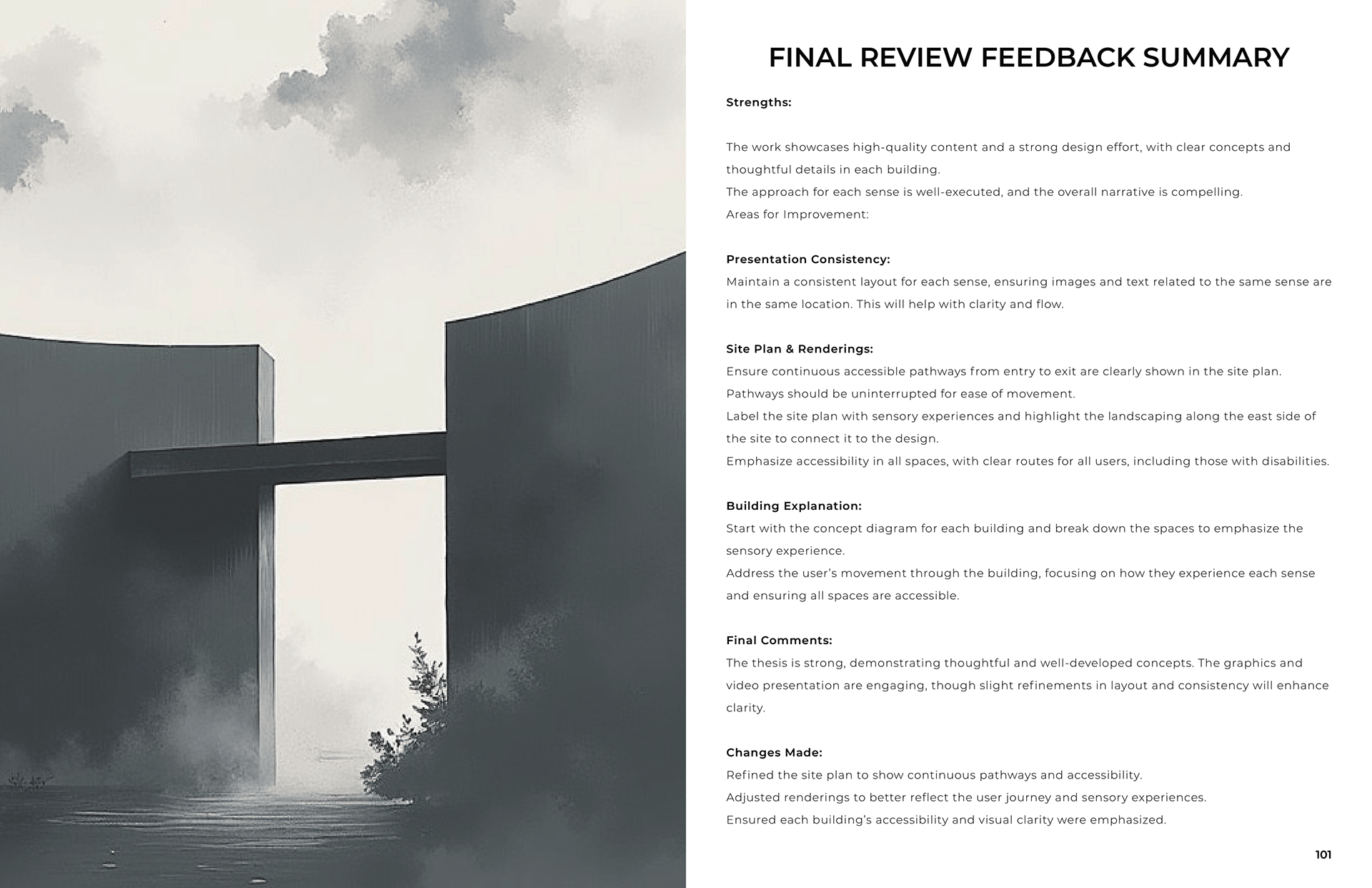In the heart of Boston’s dense urban fabric, Sacred Solace reimagines how architecture can heal. This thesis explores the “Architecture of Emotion”—how light, material, and spatial sequence can quiet the noise of city life and invite stillness, reflection, and human connection.
Conceived as a sanctuary along the Emerald Necklace, the design organizes five distinct pavilions around the human senses—sight, sound, smell, touch, and taste. Each pavilion is an immersive experience: light-filled galleries framing water and sky, meditative chambers carved from stone, aromatic gardens and clay workshops, barefoot tactile paths, and a tea pavilion floating lightly above water. These spaces form a fluid journey of introspection, slowly guiding visitors from the chaos of the city into calm and self-awareness.
Grounded in research and cultural sensitivity, the project draws from the writings of Peter Zumthor, and Tadao Ando, and studies precedents like the Water Temple and Ryōan-ji Rock Garden. The result is a design methodology that merges phenomenology with urban renewal—transforming an underused edge of Boston’s Emerald Necklace into a living refuge that belongs to everyone.
Sacred Solace aspires to more than beauty; it aims to restore mental well-being, community belonging, and connection to nature—proving that architecture can be both poetic and deeply human.
